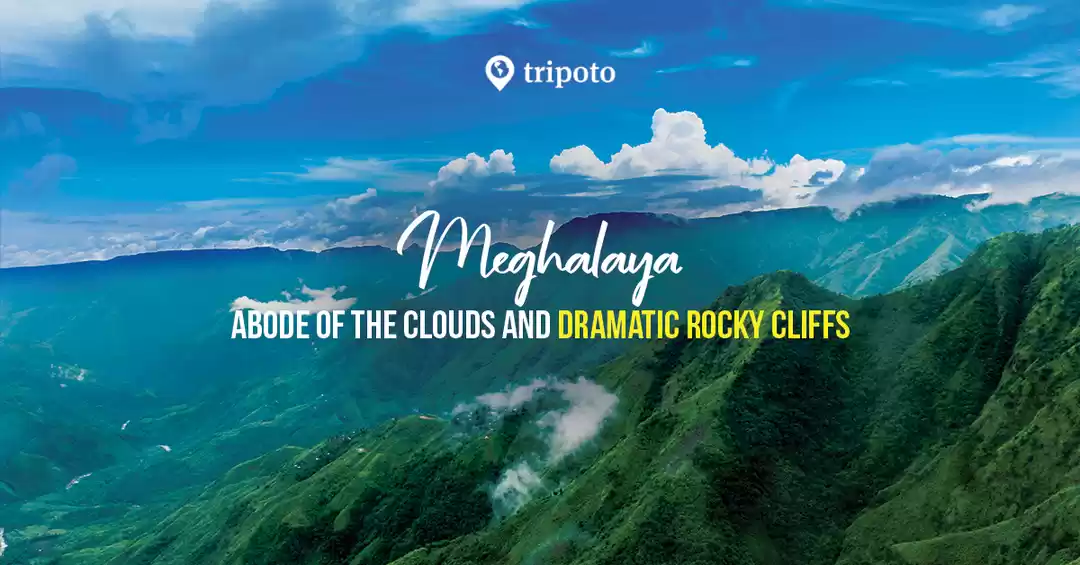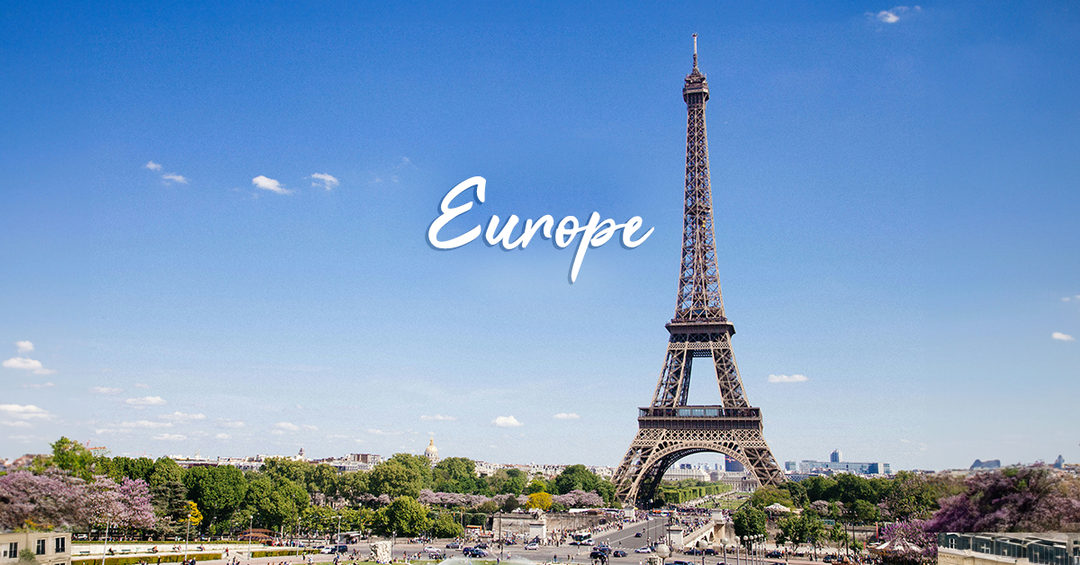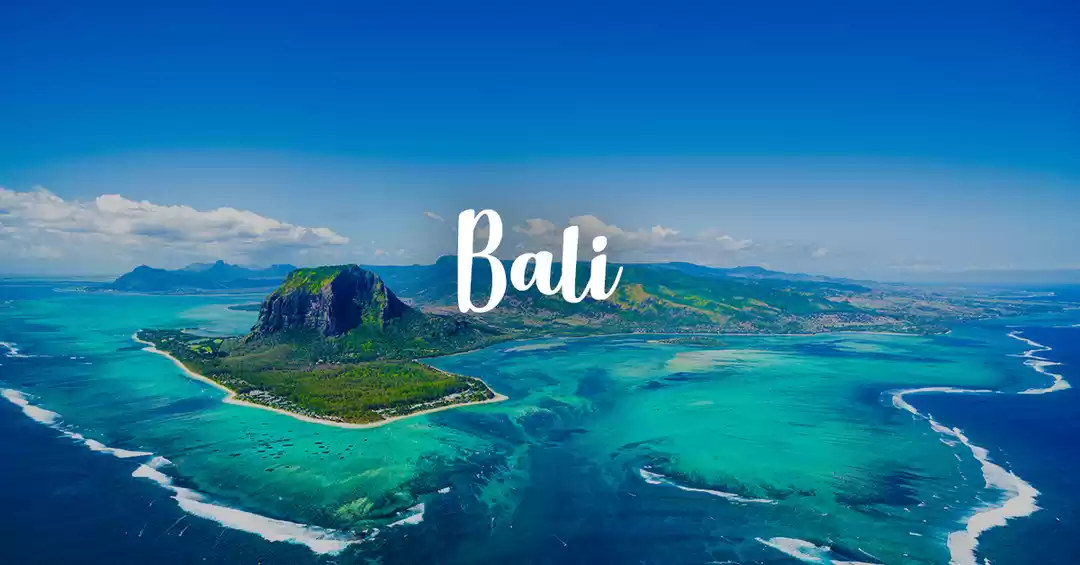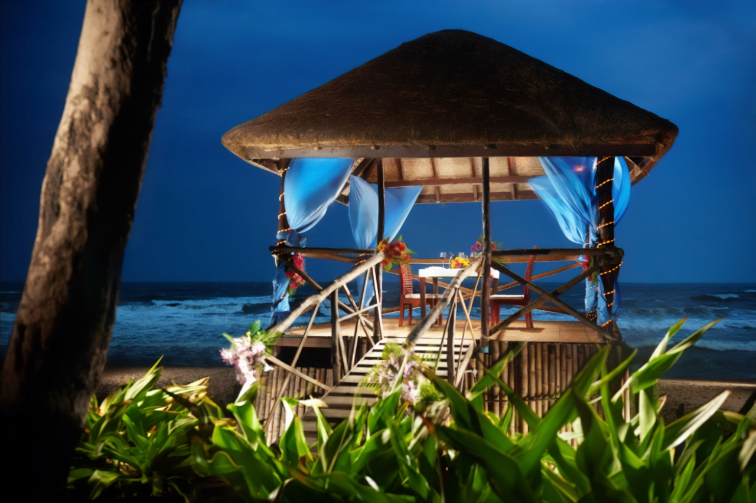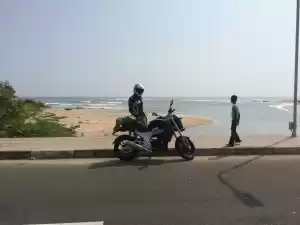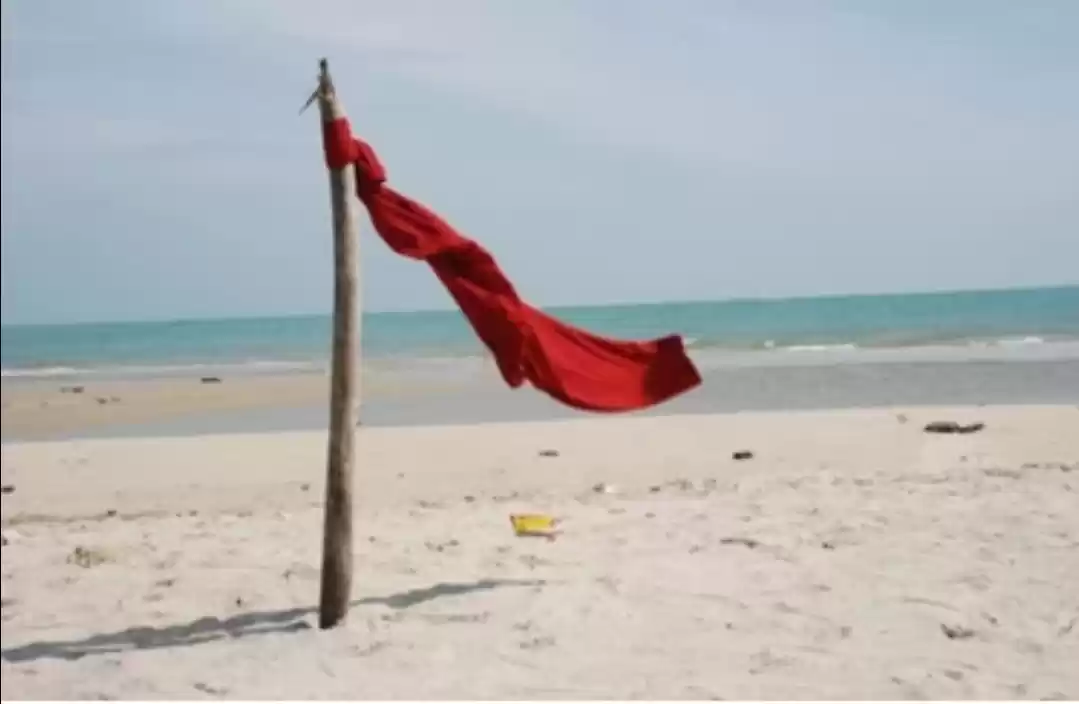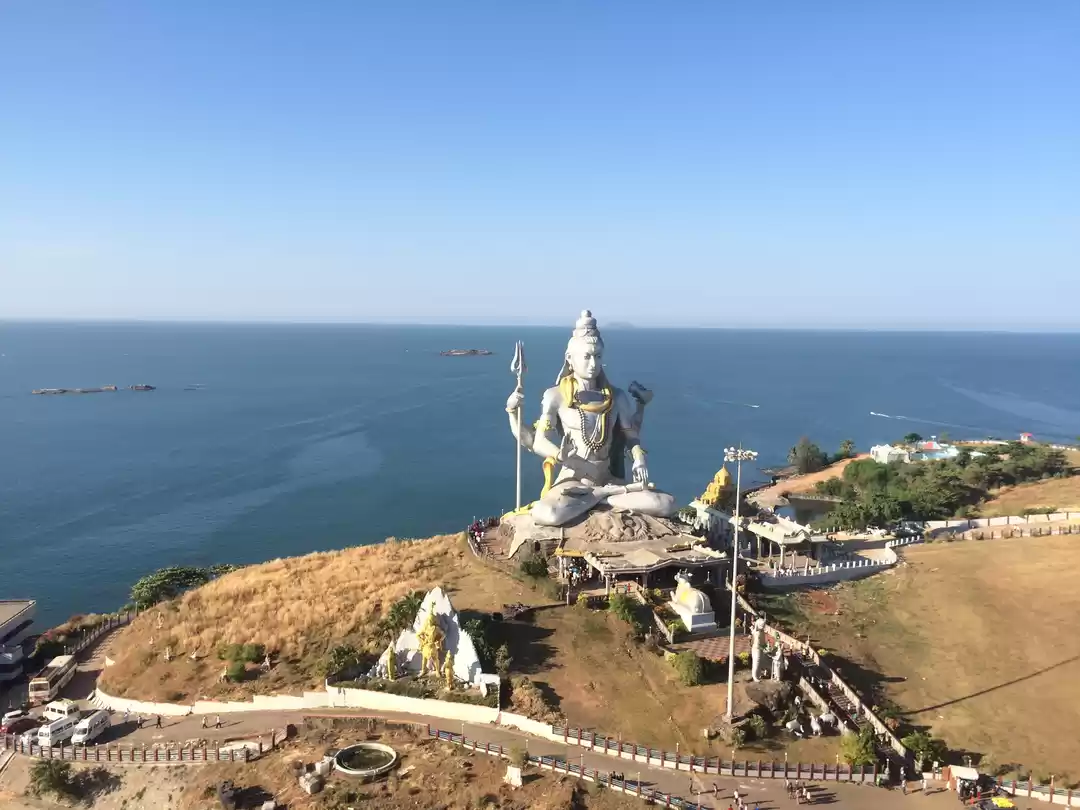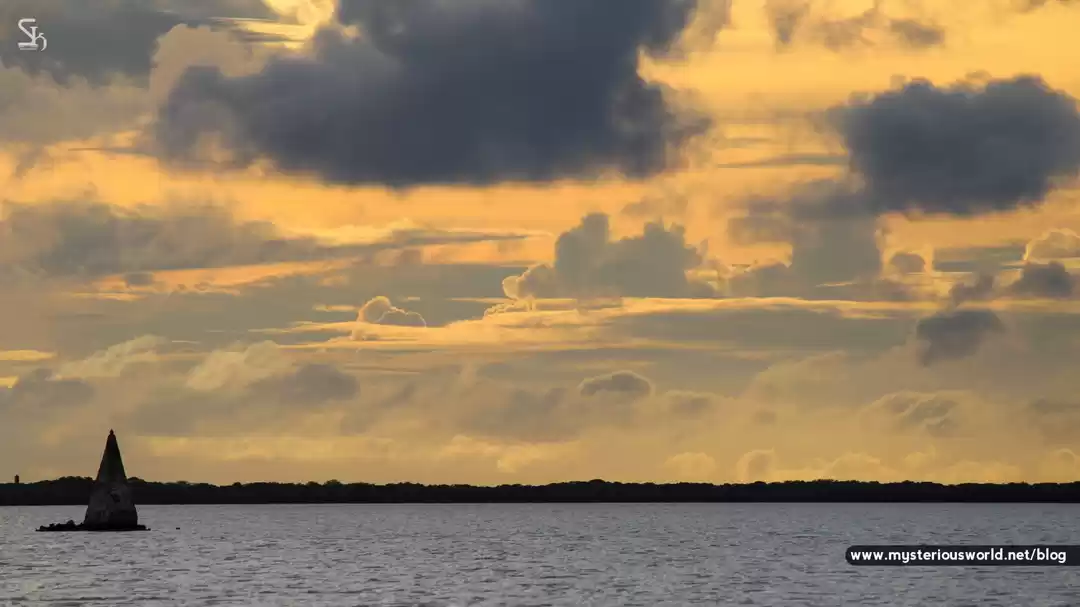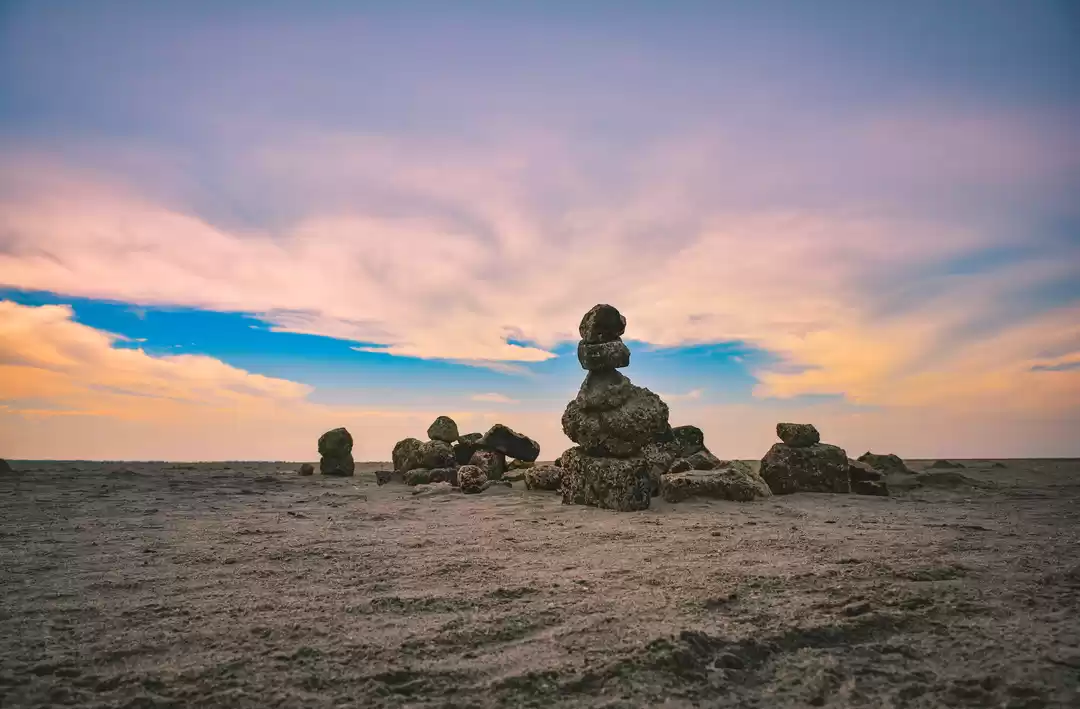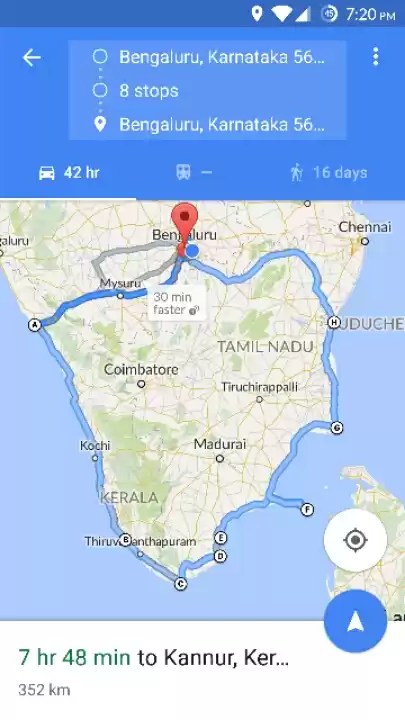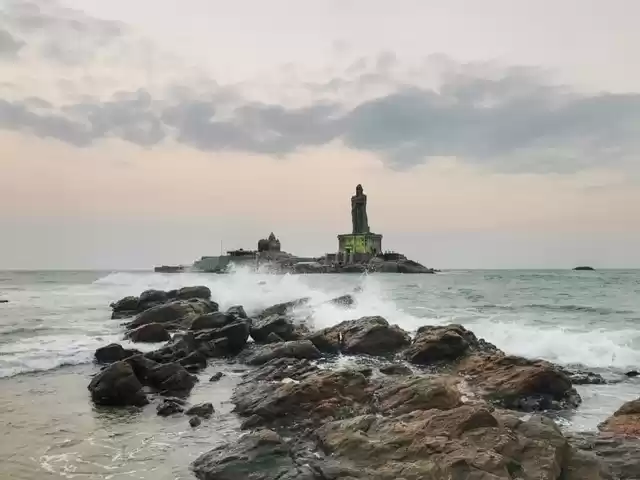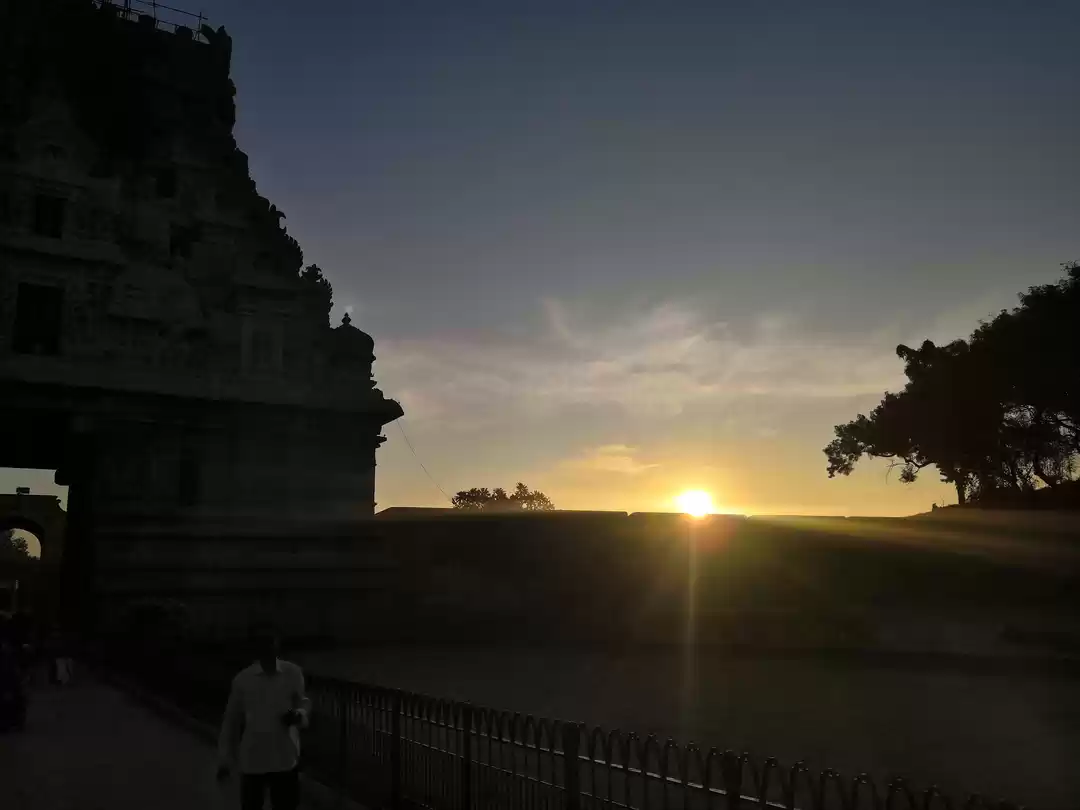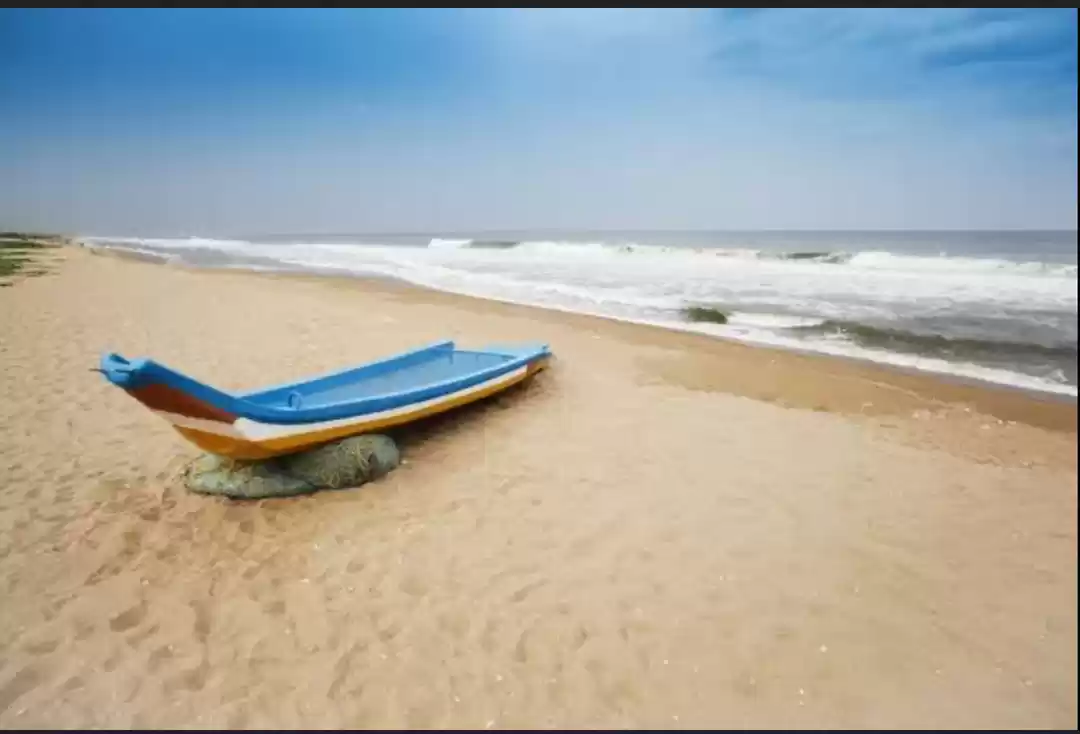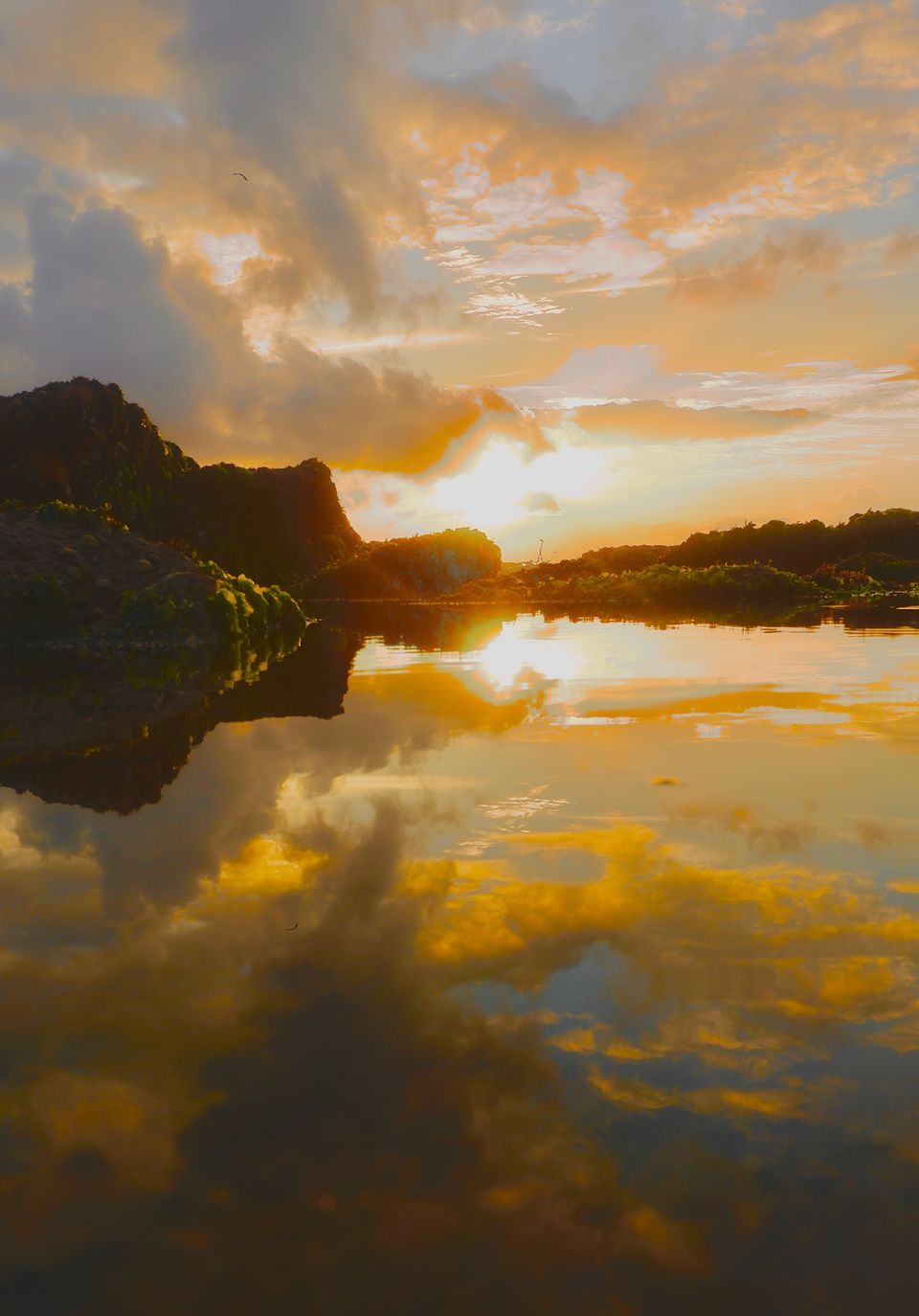
South India is known for its majestic temples, gloriously sumptuous food and its vibrant culture that is the embodiment of ancient Indian traditions. There was one very specific trip that I had been subconsciously planning for a very long time, and it finally bore fruit.
My name is Rudro. I am a wildlife photographer and travel writer based in Kolkata. Traveling has always been more of a passion for me and less of a profession. I have traversed the length and breadth of our majestic country, to experience the glamour and beauty of all places known and to discover the rustic charm of all places unknown. In this story, I will share with you, my experiences of a trip that will hopefully, soon become the adventure of your lifetime; a trip that covers three states, a trip by the coast, for the coast, from coast to coast.
BRIEF ITINERARY : CHENNAI (1N) - PUDUCHERRY (1N) - VELANKANNI (1N) - MADURAI (1N) - RAMESHWARAM (2N) - KANYAKUMARI (1N) - KOVALAM (2N) - KOZHIKODE (1N) - MANGALORE (1N) - GOKARNA (1N) GOA (6N)
TAMIL NADU
DAY 1: On the first of October I took a flight out to Chennai, the capital of Tamil Nadu, from where I would head to Puducherry There are continuous one-way-drop cab services all across the state of Tamil Nadu. I took a cab from the airport upto Mahabalipuram via the Eastern Coastal Road (ECR). The quiet little town has a population somewhere around 15,000. It is situated on a strip of land between the Great Salt Lake and the Bay of Bengal and is primarily famous for two things, the majestic monuments and temples built by the Pallava rulers in the 7th and 8th centuries, namely the Shore Temple and the Five Rathas, and of course its array of fresh seafood catch.
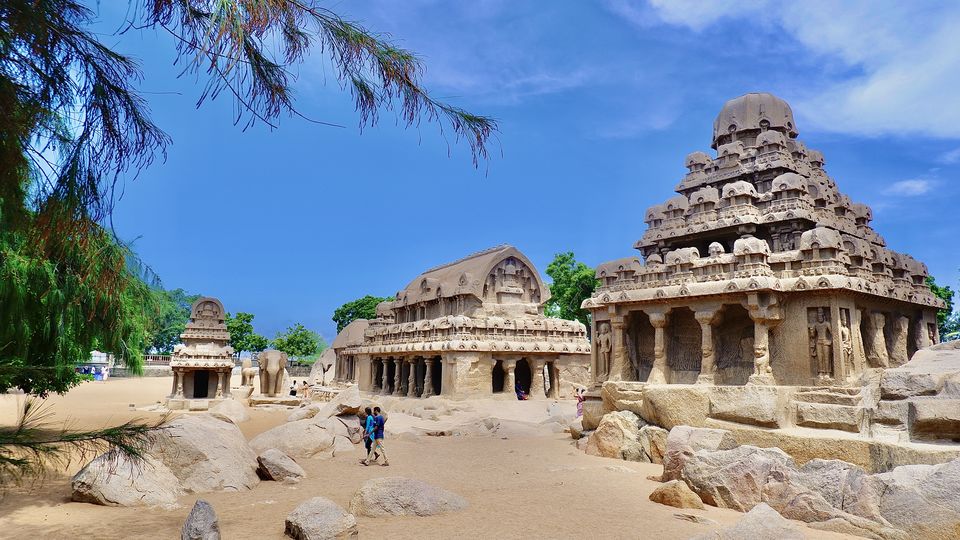
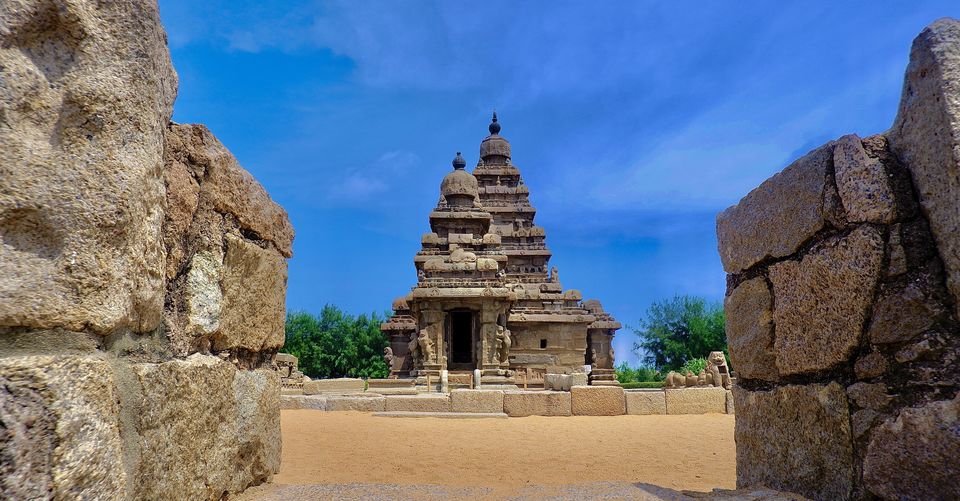
The interesting part about the Shore Temple is that, when one stands away from the temple, the sound of ocean waves crashing onto the shore heeds one's ears, but as soon as you step into the temple campus, all sounds are filtered and all you hear is silence. The secret lies in its architecture; yet another marvel of ancient India, which proves just how advanced and adept our ancestors were in the art of science and technology.
After spending some time in the sun, I decided to head for lunch. I found a colourful seafood cafe by the name of Sea Rock (hidden gem alert), right by the fishing beach. Its not easily discoverable from the main road, so one might need to ask around. As the Grey Lady once said to Harry in the Deathly Hallows book, "If you have to ask, you'll never know. If you know, you need only ask".
Suffice to say, my journey into the delicacies of South Indian coastal food began at Sea Rock. Every bit of it was magical, the fish, the spices and to top it off, the amalgamation of sky, sea and sand, decked in blue and yellow, was something I had been craving for, for a very long time.
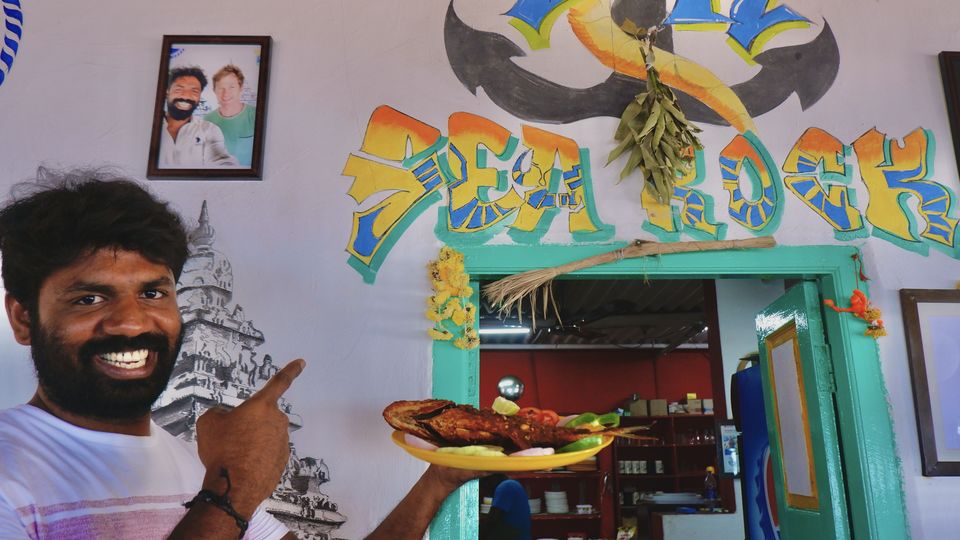
After lunch, I took a cab to Puducherry where I would halt for the night. I took up residence in a hotel located, right on the beach side road or Promenade. Pondicherry or Puducherry is a Union Territory. The place is mainly famous for Auroville, the internationally famous meditation centre. Due to Covid-19 regulations, some parts of it were closed, hence I decided to visit again when I would be able to explore every bit of its vast campus. Instead, I decided to explore the White Town of Puducherry, which is colloquially called French Quarter. The French legacy of the town is found preserved beautifully in its ochre coloured villas with small porticos and gardens adorning it. Chic cafes and bars rise up at every opening. Its astonishing how meticulously planned and perfect every lane and by-lane is.
Being a photographer myself, I can confidently say that this place is a photographer's paradise.
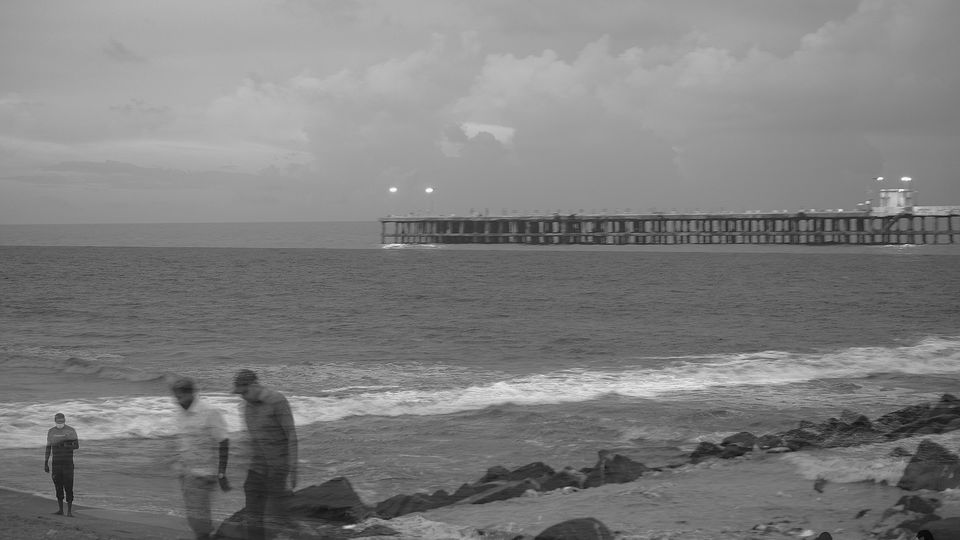
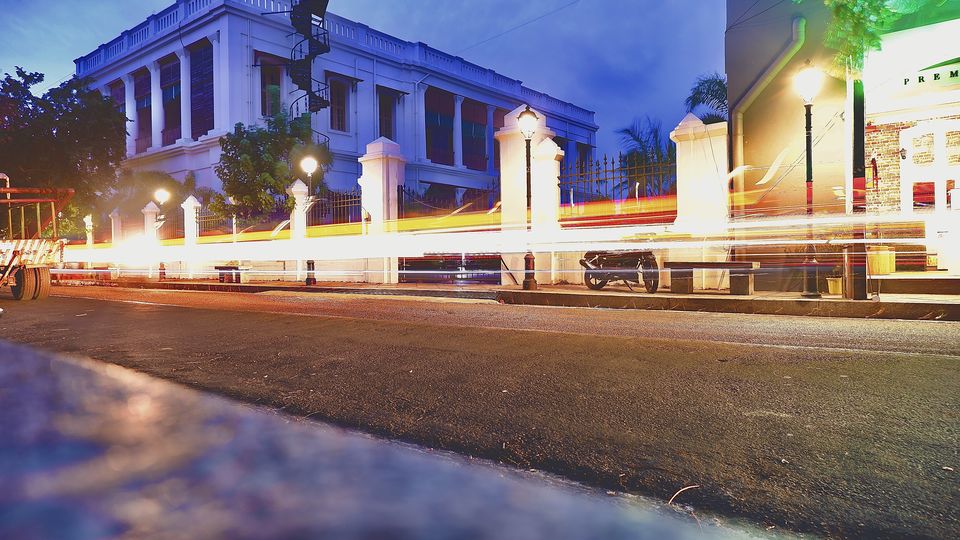
I took dinner at Villa Shanti where I was served exquisite food prepared in authentic French culinary style. If one chooses to, Chitra's is also a great place to have dinner, for at Chitra's the party is always on.
DAY 2 : Since I don't take breakfast, early next morning I hired a scooter to head to Eden beach (hidden gem alert), which is around 10 km from Puducherry town. Although it is well maintained, it is a lesser known beach because of its location. It is hard to navigate and to arrive there is nothing short of an adventure. The rewards though, are stunning. The way to the beach is surrounded by small backwater ponds which are full of jellyfish. One might not notice them easily, but they are there below the surface. The ponds may look enticing but do not enter them, for if you do, you are in for a world of pain. Remember when Monica was stung by a Jellyfish in Season 4 Episode 1, 'The One With The Jellyfish' of F.R.I.E.N.D.S.? If you do, you'll know not to attempt.



After spending an hour on the beach, bathing in the waves, I took a cab and headed to Velankanni, the famous Christian pilgrimage shrine, where they say one's wishes come true. The distance between Puducherry and Velankanni is 161 km, a 4 hour journey.
Upon arrival in Velankanni, I settled down in the hotel, had a light lunch and set out to explore the Church campus and the marketplace surrounding it. Velankanni beach is small and almost always crowded at this time of the year and hence I decided not to risk visiting it, especially with Covid-19 regulations in place. The Church on the other hand was more than fulfilling. The campus extends from the Morning Star Church to the Basilica of Our Lady of Good Health, which lies towards the beach. Entry inside both Churches have been restricted due to Covid-19 regulations but fortunately I was in time for a special evening prayer ceremony. The statue of Mother Mary holding baby Jesus in her arms was brought out in a chariot. The priests and nuns, clad in white formed a procession as the chariot was taken around the church, signifying that The King of all people was being welcomed into his abode. The interesting part about the statue here is that Mother Mary is depicted wearing an Indian Saree.

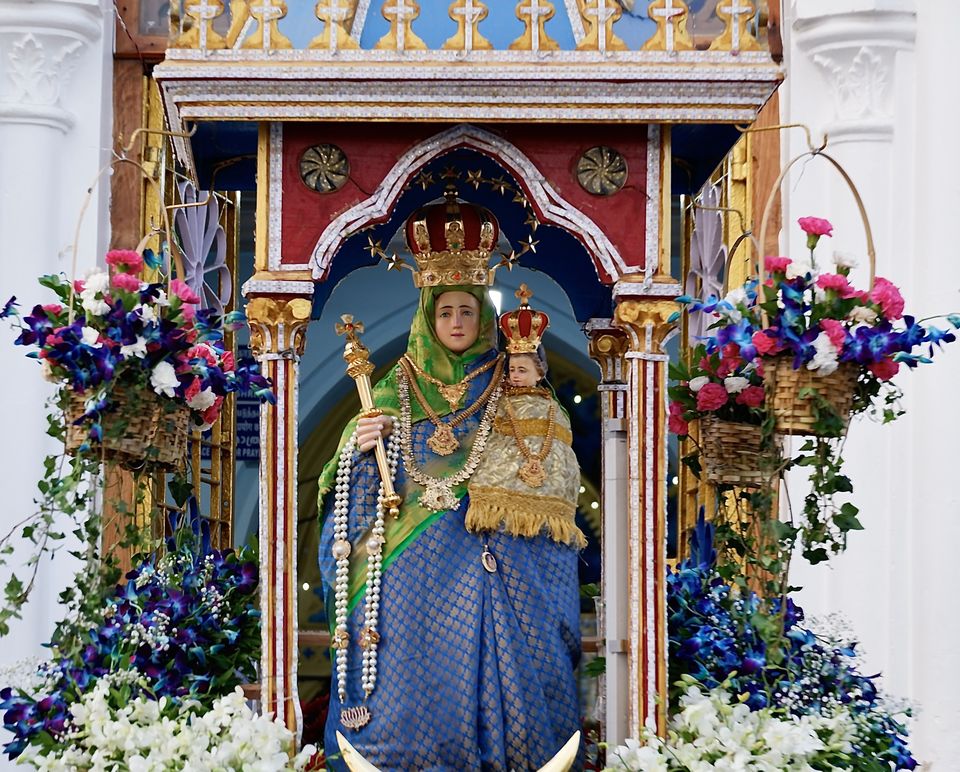
After paying my respects I, walked down the market place. Shops selling religious artifacts and wares crowd the streets of Velankanni. After doing a bit of exploring, I walked back to the hotel where I had seafood for dinner; King fish fried in local spices on a flat pan (tawa) along with golden fried calamari. The food was to die for.
The greatest attraction in the Velankanni Morning Star Church campus is the towering statue of Christ the Blesser. The statue is humongous, adorning the blue sky in a shade of pure white.
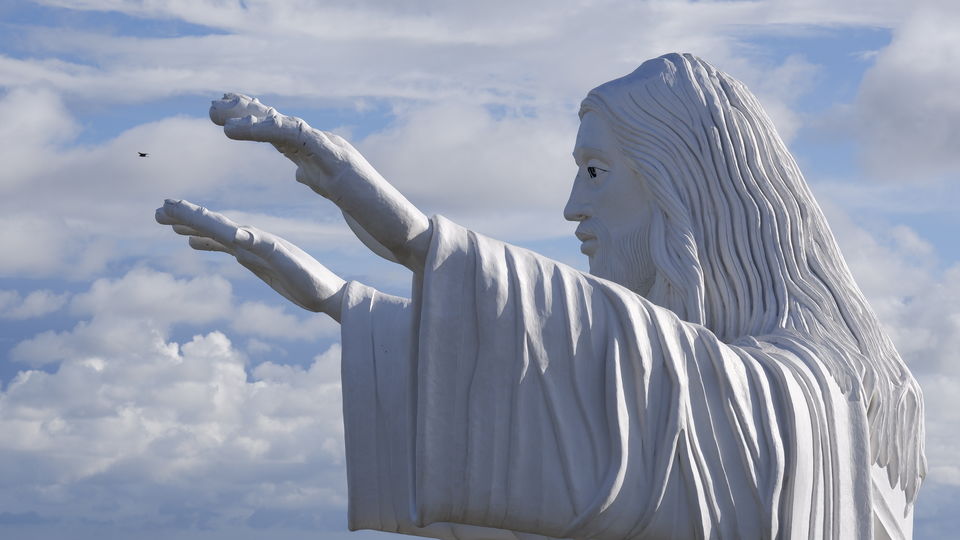
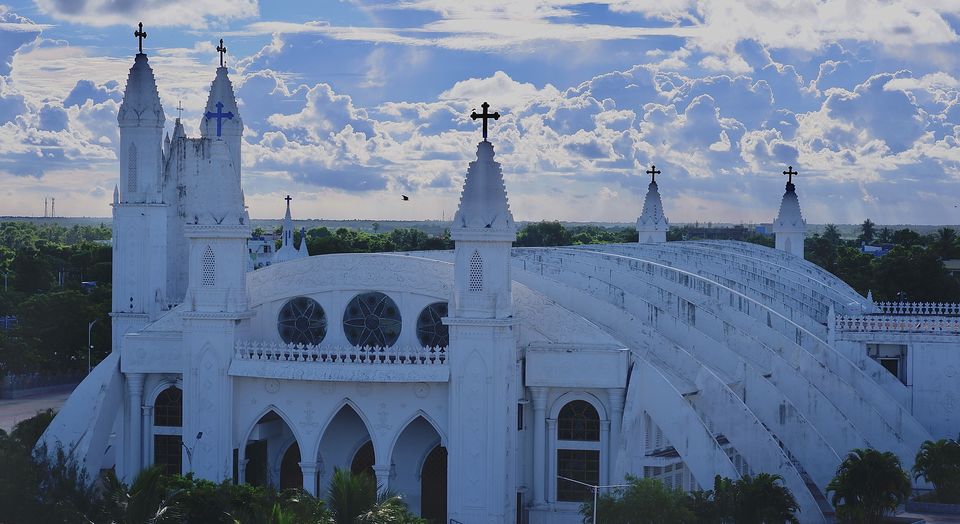
DAY 3: The distance from Velankanni to Madurai is around 250 km and going the distance would take around 6 hours. I'd be traveling via Tanjore (Thanjavur) and I couldn't help but make a stop for one main reason; to check out the Thanjavur style of painting. Although the rich art form was first introduced in Southern India by the Chola dynasty who ruled over their empire with their capital in Thanjavur, the paintings were popularised in the 16th and 17th centuries by the Maratha court of south India. The paintings are mostly of Hindu Gods and Goddesses with large, round faces that were symbolic of divinity and prosperity. The most famous paintings were and still are of Butter Krishna or Child Krishna engaged in acts of playful notoreity. Many famous temples depicted this style of painting in the old days.
Thanjavur paintings are easily distinguishable by their use of gold in the paintings. While some use gold paint, most traditionalists still use real Gold blended into paint, precious and semi-precious stones to give their works a truly grand design. This is the sole reason why traditionally prepared Thanjavur paintings are insanely expensive, and also why these traditional art galleries are quickly going out of business.
I spoke to some locals and located Murugan Art Gallery (hidden gem alert), a small home-based art gallery, near to the Big Temple of Thanjavur. They assured me of finding sure content and honest artists, who worked not for business but for the love of traditional art and for the pride of their heritage.


On the way to Madurai from Thanjavur I found a Chettinad non veg eating house where I tasted Tamil Nadu's classic Chettinad bamboo biryani. I have tasted biryani cooked in different styles from all over India, but south Indian biryani has had an impeccable effect on my taste buds. The use of a minimal amount of oil and an array of spices is what makes the biryani so special. The mutton, chicken, beef, fish are cooked with rice in small pieces, blended with Chettinad spices and served with onion 'raitta', which is the south Indian equivalent of North Indian raita. at the end of the meal, a sweet dessert called 'kesari' is served.
It was by far the best biryani I had ever had.
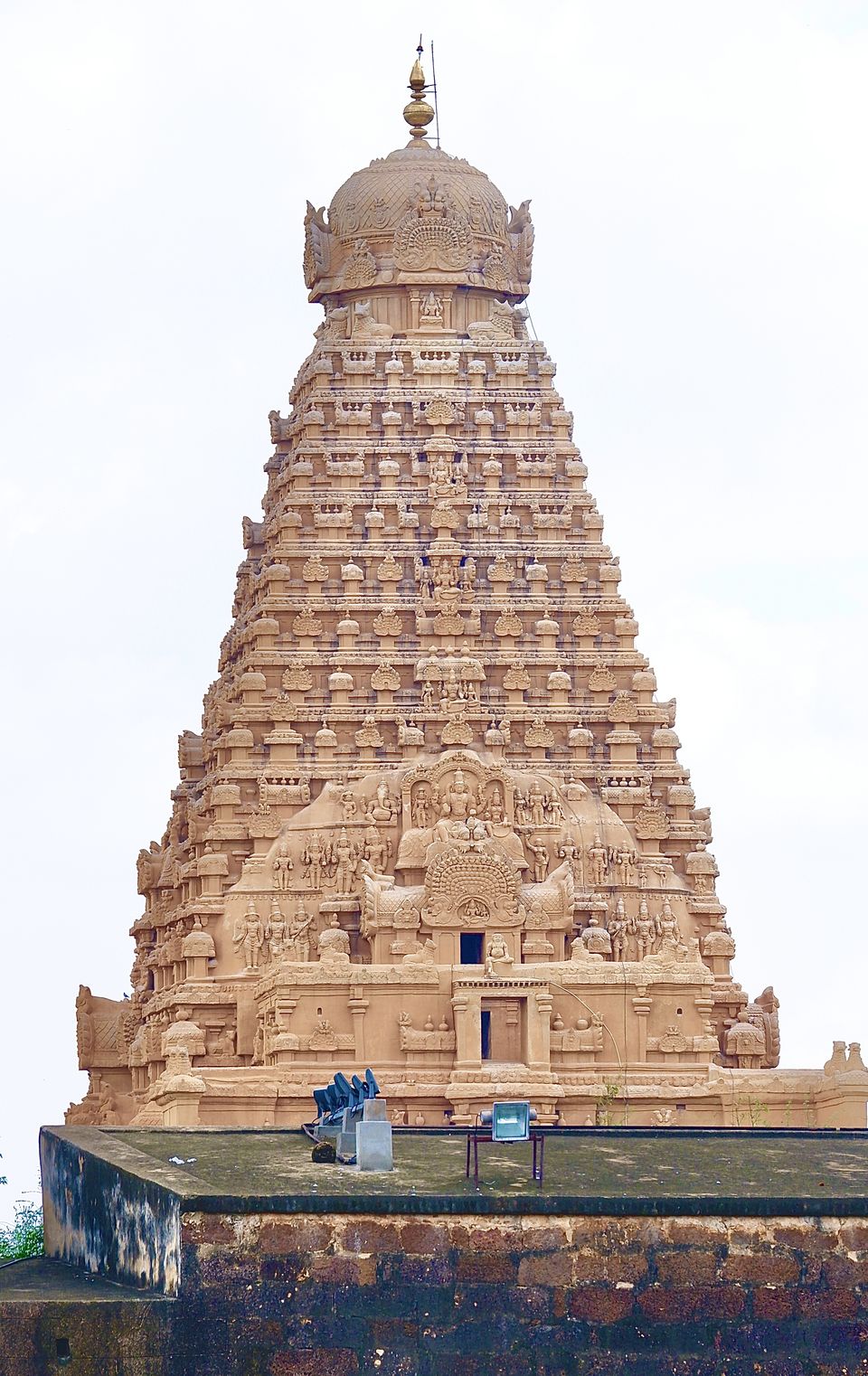
I reached Madurai in the evening, by which time the Meenakshi Amman temple was closed for visitors. Hence, I decided to visit the temple in the morning.
DAY 4: The Meenakshi Amman temple is one the greatest marvels of India, let alone Tamil Nadu. The massive temple complex stretching over 65000 square meters encloses the Potramarai Kulam, a huge 'kund' or pond, which existed far before the foundation of the temple was laid. The story goes that Meenakshi was an incarnation of the Goddess Parvati, born to the Pandiyan royal family of Madurai. It was prophesied that on Meenakshi would recognise her future husband after just one glance. When she grew up, she led her army on various successful conquests and finally arrived at the foot of Mount Kailash, the abode of the Great God, Lord Shiva, husband to Parvati. Upon meeting him, they instantly recognised each other as their soul mates. Later, Lord Shiva took the devilishly handsome form of 'Lord Sundareshwara' (sanskrit for 'Beautiful Man) and arrived at Madurai to be betrothed to Meenakshi at the kund. Then they peacefully ruled over Meenakshi's kingdom for a long time before leaving for their celestial abode at Kailash.
The temple was built by King Kulasekara Pandya between 1190-1216 CE and every ruler who came after him, gloriously contributed to the architecture of the temple, bolstering its beauty with every attempt.
The story of Meenakshi Amman temple is a sweet love story, almost out of a Disney movie. The ritual is equally heart warming. One may enter the temple but unlike other temples, the sanctum of Lord Shiva can only be visited after visiting Meenakshi's sanctum, for she is possessive of her husband and one must seek her permission before meeting him!
The entire temple is built out of granite. Intricate sculptures adorn every wall and pillar. From the inside, the entire complex is shaped like n 'O', surrounding the pond. Every ceiling is detailed with murals bearing abundant religious references and optical illusions. There are four gates. Entry via the south gate is advisable because the north and east gates are ancient markets, forever crowded with devotees and locals. The west gate is still under excavation and restoration process is on and is thus closed to the public.
Photography inside the temple is strictly prohibited and one cannot carry their mobile phones. Being a photographer, I was disheartened at being unable to document this gold mine of subjects before me. After paying my respects to the deities, I asked the Pandit as to why apply such strict rules. The man smiled at me and gave me an answer that shook me to my very core and pushed me in that moment, to evaluate my very understanding of religious culture in India.
In his words, "Son, who is God? God is not someone who resides in the idols that are in these temples that men have built. God is within every man, for a man's spirit is his own God. The Shiva Purana describes Shiva as the Paramatma, the eternal spirit. That is what we are made of, fragments of the infinite aether. When one comes to the temple to pray for goodwill, good health or even materialistic pleasures, one is not talking to God but to the spirit within him. Temples such as these are places that help one to channel their energy into self healing, self preservation and self actualisation. Belief in God is what shall bring men and women in hundreds to this temple and herein lies the secret, that belief in oneself is discovered only after praying to oneself via a buffer medium that we call God. This is what Shastra teaches us. Human beings are simple creatures, no matter how complicated they may seem. Human beings are flawed and unsure of their own capabilities, but each of us have infinite potential. The science encoded in ancient texts is what will lead us into social and personal progress. Sureity comes from within. A complete man is one who is sure of himself. That is about it. Praying in temples like these which are built in accordance with Shastra have the power to help you channel your energy and focus on your goals without any distractions of modern technology such as mobile phones or cameras. This is why people say Hinduism is a way of life, although they might not completely understand why they say what they say."
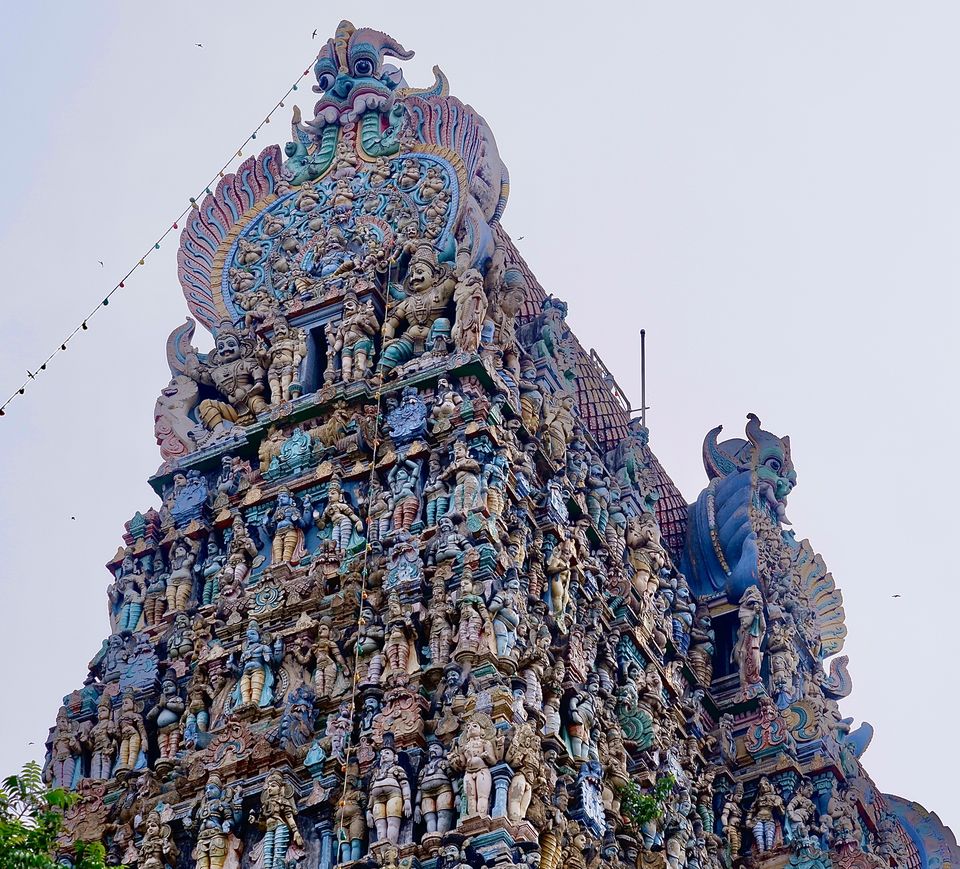

After exiting the temple I felt a sense of peace and inner sanctity. I met a friend of mine from Cochin, Kerala and drove down with him to the island city of Rameshwaram, which is around 170 km from Madurai.
I reached Rameshwaram post lunch by 4pm. I had taken lunch at Anifa Restaurant in Ramanathapuram, the last mainland city before crossing the famous Pamban Sea Bridge to the island. Lunch comprised of delicious mutton biryani and fried Chara, which are finger sized sea fish, fried to a crisp. When garnished with lemon and onion, only a few other things can play close to heaven.
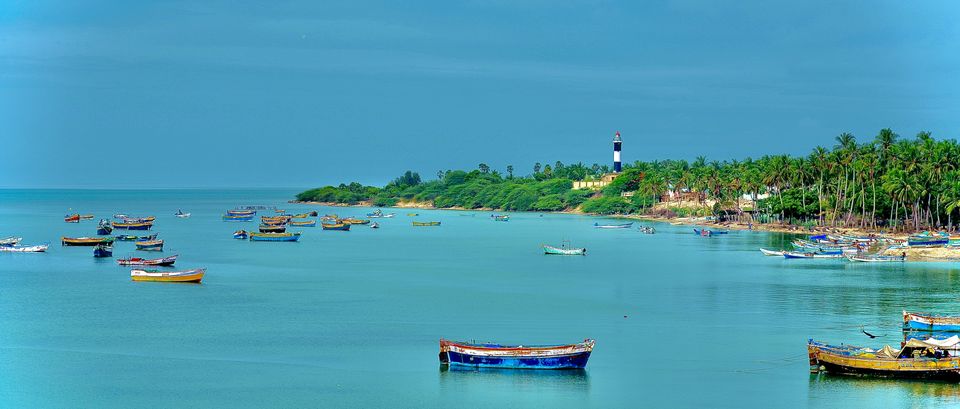
Rameshwaram is one of the biggest pilgrimage shrines for Hindus in India. According to Hindu belief, Rameshwaram, Tamil Nadu, is one of 4 'dhaams' or shrines, all of which must be visited to attain Moksha or Nirvana, that is the soul's final rest, an escape from the infinite cycle of life, death and rebirth. The other three are, Badrinath in Uttarakhand, Puri in Odisha and Dwaraka in Gujarat. According to the Ramayana, Lord Ram landed in Rameshwaram after winning the war against Ravan in Lanka. The Ramanathaswamy temple in Rameshwaram is also one of twelve Maha Jyotirlingas, which in Sanskrit means 'Light of Shiva'.
The construction of the Ramanathaswamy temple is modest, and integrally similar to almost all other South Indian temples. The shiva linga on the inside is draped in red and the sanctum is similar to the Sundareshwara sanctum in the Meenakshi Amman temple. The south gate of the temple is the Agneeteertham side, where people bathe in the sea to purify their souls. It is said that Agni, the God of Fire took a dip in the sea here, to purify himself and wash off his sins.
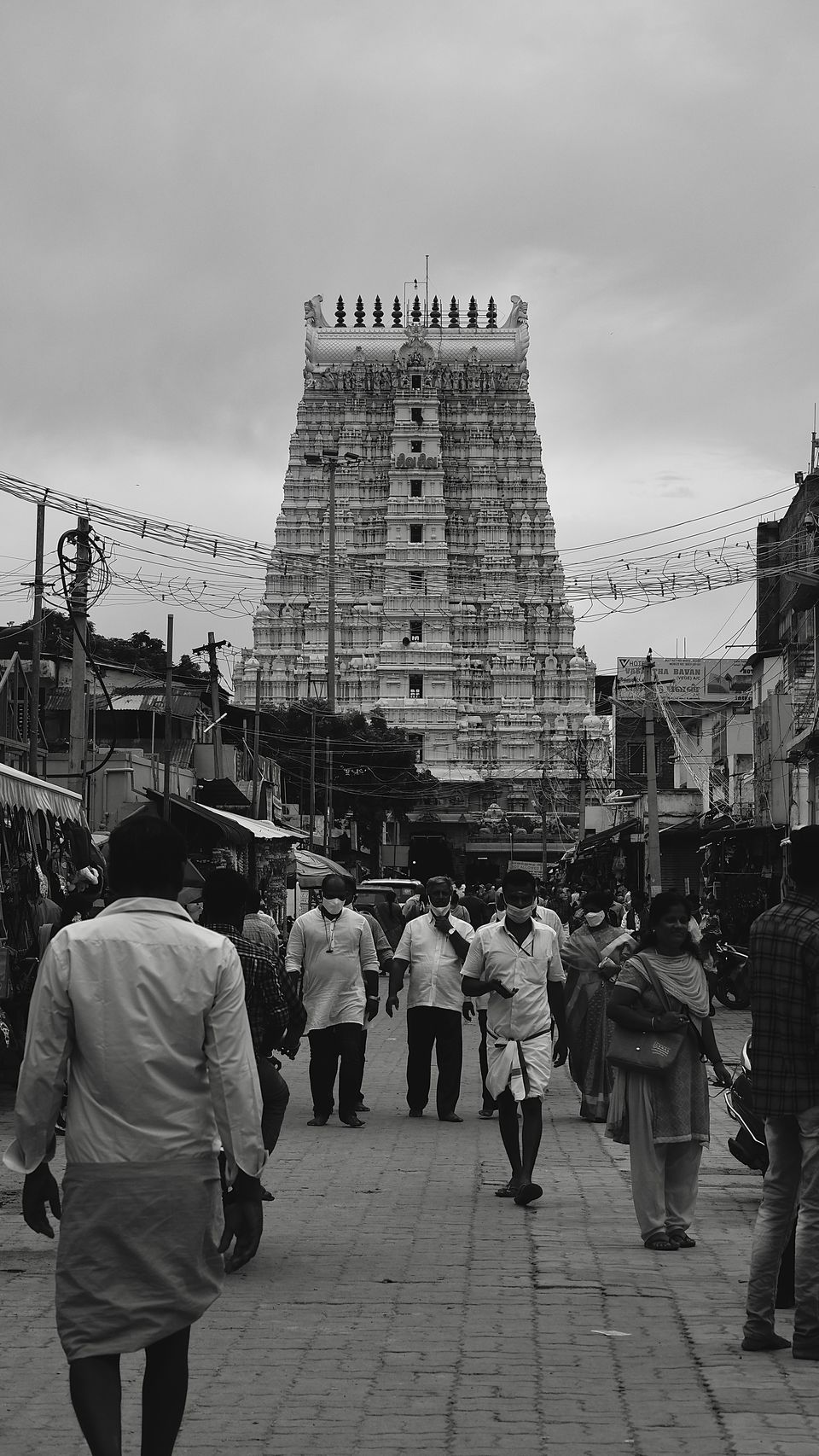
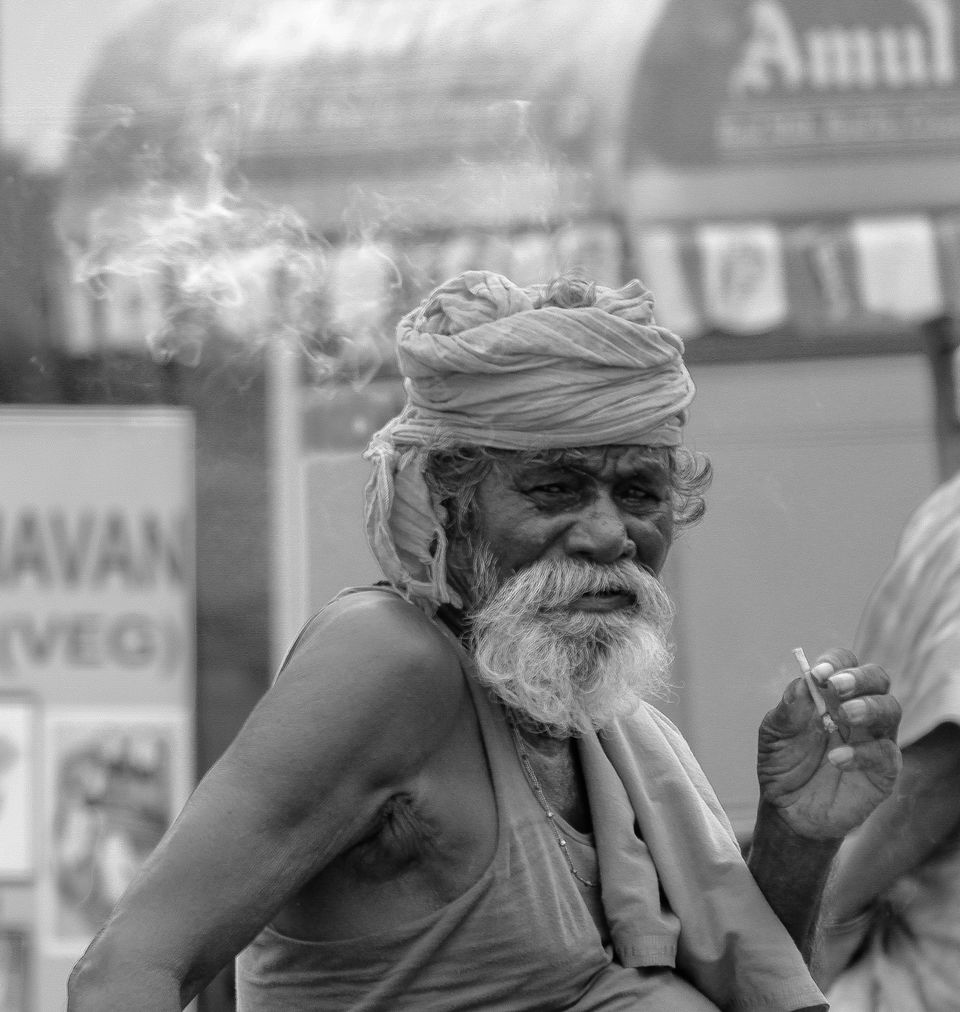
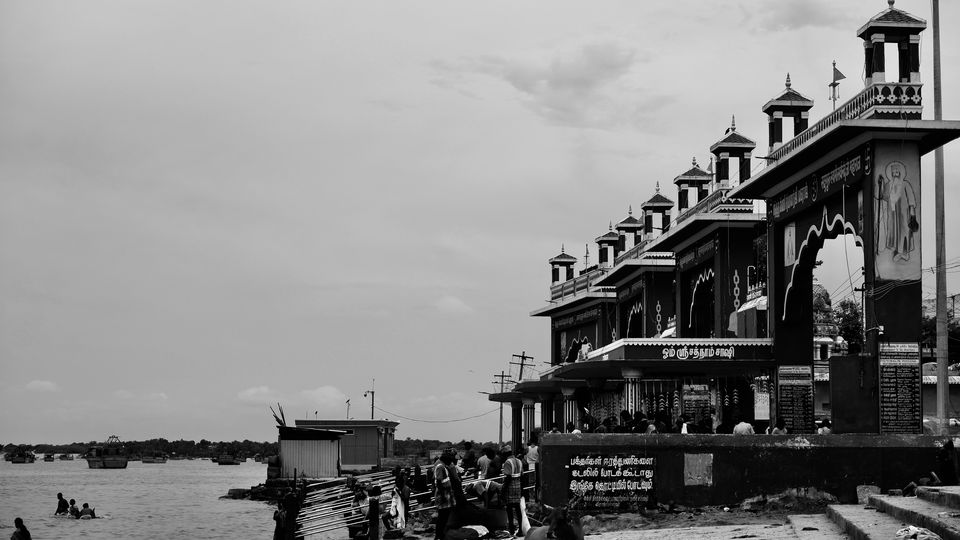
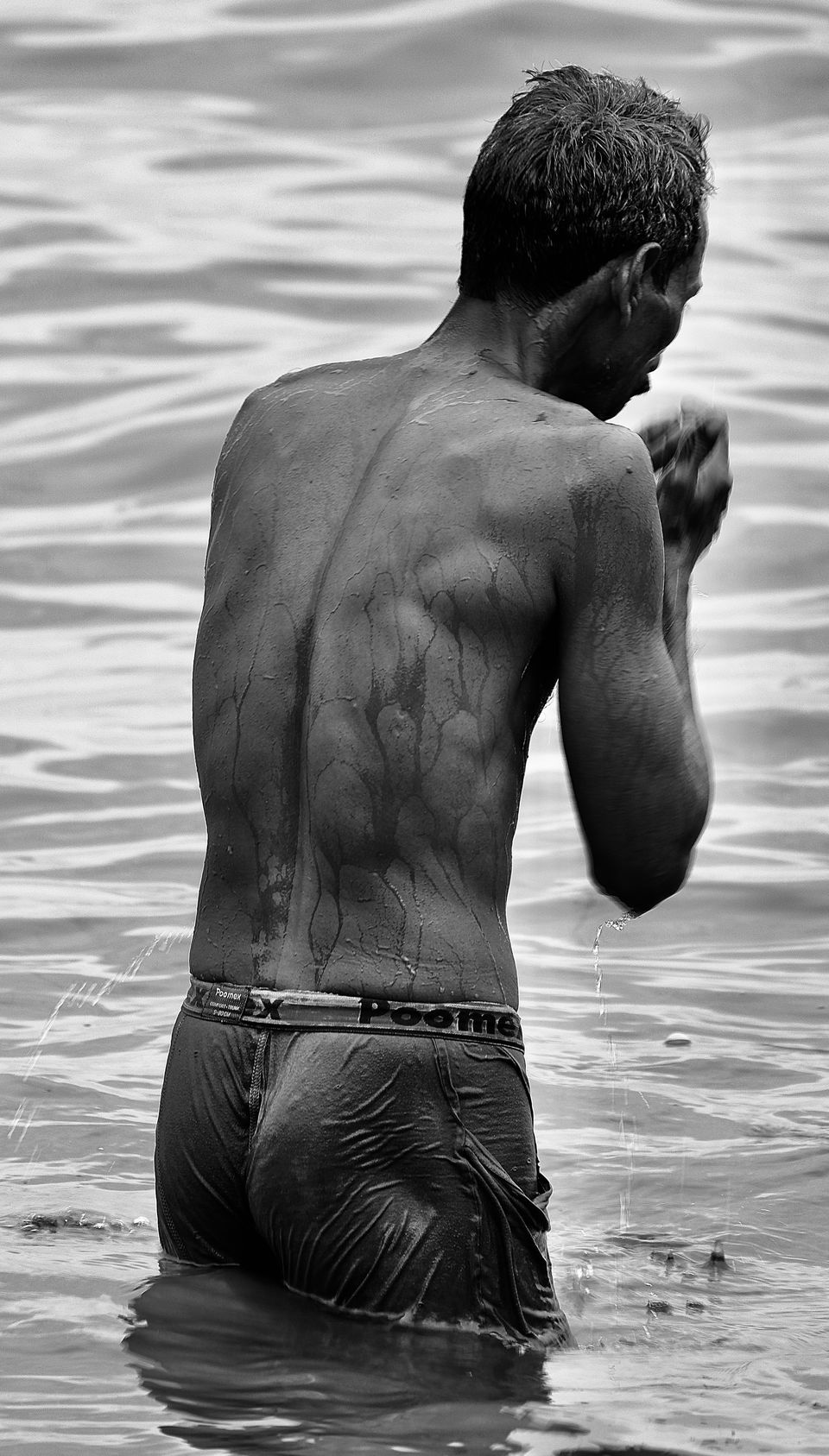
There is a special preparation of mutton that I had wanted to taste for a very long time and Rameshwaram was the place for it. Although most of the restaurants and eateries in the main town of Rameshwaram are pure vegetarian, there are small shacks that serve non vegetarian food. My friend Shaino and I located one such shack and ordered for Mutton Chukkha (hidden gem alert), a shredded mutton dish cooked in Chettinad style until dry, and along with that we had local parotta. Unlike parotta in the north and east, these are soft, fluffy and beat with eggs, and are somewhat like flat buns. Food was sumptuous. I find it a common misconception that South Indian food is limited to Idlis, Dosas, Sambhar, Vadas, etc. While the vegetarian food is no doubt famous, the non-vegetarian cuisine has a huge range of options in its arsenal.
DAY 5: The next morning we headed out to Dhanushkodi, also known as the dead end of India. It is a fishing village on strip of land that extends out into the sea. The drive from Rameshwaram to Dhanushkodi is a lifetime experience. When you leave the mainland and keep driving towards the tail, the landscape changes drastically from green coconut groves to white sand, salt water ponds and sparse vegetation on either side. Its almost as if one can feel the vast mainland slimming down to but a narrow stretch of sand. The last point of Dhanushkodi is Arichal Munai, the last point of the stretch before Sri Lanka. From Arichal Munai, the naked eye sees open water but if one avails a special telescope service, the floating stones of Adam's Bridge or Ram Setu can be seen just across the horizon.

Arichal Munai is a popular tourist destination and when I arrived it was extremely crowded. So I didn't linger much longer. Instead I set out to explore the Dhanushkodi road itself. It might sound absurd, but if anyone is looking for an offbeat location, my suggestion would be to find one out for themselves. The whole of Dhanushkodi is an amalgamation of over a score of beaches. Pre-pack a lunch, locate one, and enjoy a lazy afternoon by the sea. Dhanushkodi is famous for its seafood shacks with thatched roofs, built right along the coast. The catches are fresh, the prices are economical and the dishes range from delicious prawns to juicy squids as well as big and small fish found along the coast. I found myself one such peaceful, secluded beach right behind a shack. The sound of waves crashing onto the virgin shore and the smell of freshly cooked fish wafting in the air, made the entire affair all the more enticing.


On the way back from Dhanushkodi, a sudden stop for coconut water led me to a spot that became the milestone of the entire day. While returning from the tail end of Dhanushkodi, both left and right coasts are dotted with ruins of houses, temples, offices etc. Among these, on the left coast is the ruins of St. Antony's Church (hidden gem alert). Decades ago Dhanushkodi was a flourishing seaside town. For only 72 rupees, one could board a train from Chennai upto Dhanushkodi, where they could change transport to a ferry that would take them across the Palk Strait upto Jaffna, Sri lanka, where a train would wait for the passengers to take them to Colombo.
On 21st December, 1964, a super cyclone with waves as high as 20 feet hit Pamban island. Rameshwaram was insanely affect but Dhanushkodi was ravaged to the point that it was almost wiped off the face of the earth. Post calamity, the government declared the place uninhabitable. Even now the fishermen who live there cannot build permanent houses, only one room huts and shacks. Dhanushkodi is thus also called Ghost Town. St. Antony's, a once majestic church built out of corals, is now a towering structure, standing calmly at the edge of the ocean, a grim reminder of the morbid past of a once lively town. Ask locals beforehand in order to stop at the right spot. The church is fleetingly visible from the road.

Small shops run by the fishing community surround the ruins. Sea shell artifacts, bracelets, necklaces are among the many colourful wares they sell.
There is one very rare find amongst all these. Pearls, of various shapes, sizes and colours. The truth is not all of them might be original and one might have to strive hard to find them.

Water sports and activities like jet ski rides, scuba diving and snorkelling are widespread in Rameshwaram. In the evening I indulged in a bit of snorkelling around the reef, about 2 km from the shore.


DAY 6: The next morning I drove down to Kanyakumari, the tip of the Indian mainland. I am going to take a moment now to speak about how amazing the roads are in Tamil Nadu. My entire driving experience was extremely comfortable. The ECR (Eastern Coastal Road) is 4 lane and the views are breathtaking. One can almost always see the Bay of Bengal on their left and striking townscapes on their right. The beauty of the road from Rameshwaram to Kanyakumari becomes enhanced after Nagarcoil because on the right, the hills of the Eastern Ghats can be seen fading into the shore. The views are absolutely stunning.
Kanyakumari is famous for the Vivekananda rock and for the Sangam, the place where the Bay of Bengal from the east and the Arabian Sea from the west meet the Indian Ocean in the South. The Vivekananda Rock is a huge rock, about a kilometre across the open sea. It is the place where the great saint, Swami Vivekananda meditated, after swimming across the sea to reach the rock. It is said that it was here, where he realised that all things come to an end. Even a country as vast and diverse as India has shrunken down to one single rock at the end of it all.
Now a temple stands on Vivekananda rock. From a distance it is indeed magnificent to look at.
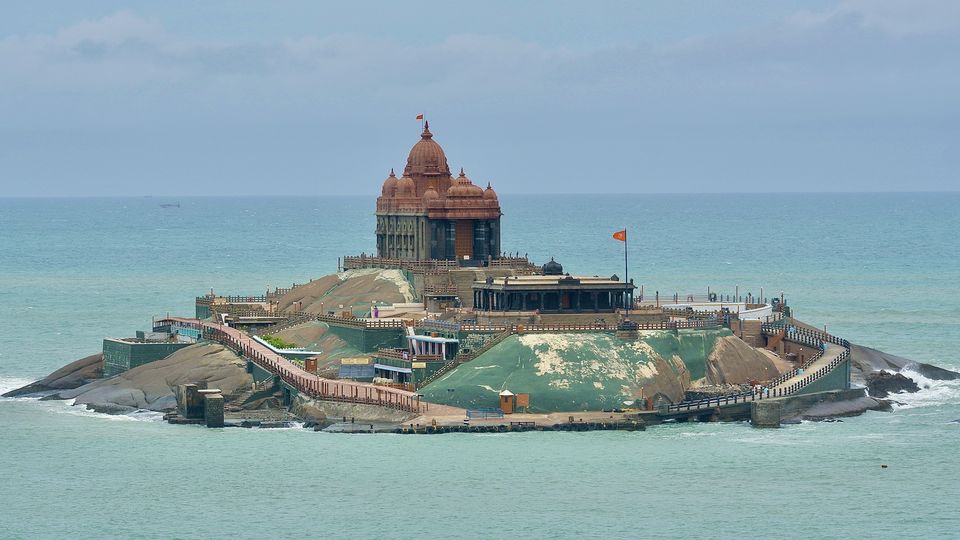
Going to each and every temple there is, is not my thing, mostly because temples are tourist spots, and frankly the crowd scares me. I didn't visit Vivekananda rock because I was satisfied by the calm view of it from a distance. Hence I started looking for better things to do in Kanyakumari.
About 8 km from Kanyakumari town, where the hills of the Eastern Ghats meet the sea, quite a few hidden hiking trails lead up to the peaks. The hike to Marunthuvazh Malai (hidden gem alert) is one such trail that one must complete, if he or she is fond of hiking. The views from the top are breathtaking. To reach the base of the hill is a project in itself because gps doesn't do you much good. If you speak the local language you can ask around, if not, you can use Maps to reach the point where the main road blends into a goat path and then try to spot a single white Ashram built into the upper reaches of the rock face. There will be no cause for confusion because there is only one ashram and it is easily visible from the distance. Use that as a marker and head to the base of the hill. The trail is then easily accessible and will lead you past the ashram and onto the peak. Watch out for the slippery slope and the steep stairs that lead to the ashram.
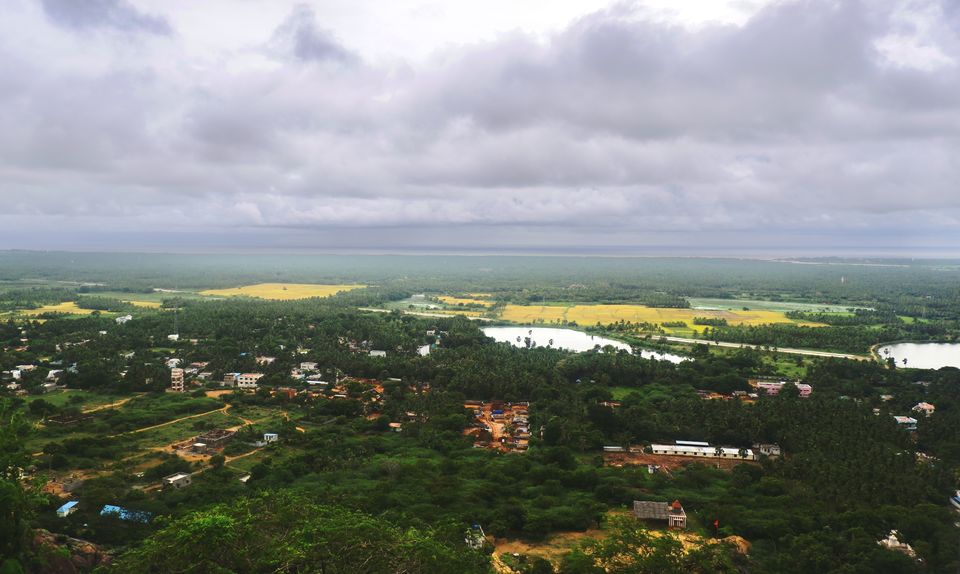
I have been chasing good sunsets and sunrises since the beginning of the trip but unfortunately my endeavours didn't bear fruit, either because of incessant drizzling, or the accumulation of clouds in the western sky. My luck finally improved in Kanyakumari.

DAY 7: My morning started early with a gorgeous sunrise. The eastern sky decked itself in hues of pink orange and yellow as the water mirrored its beauty.
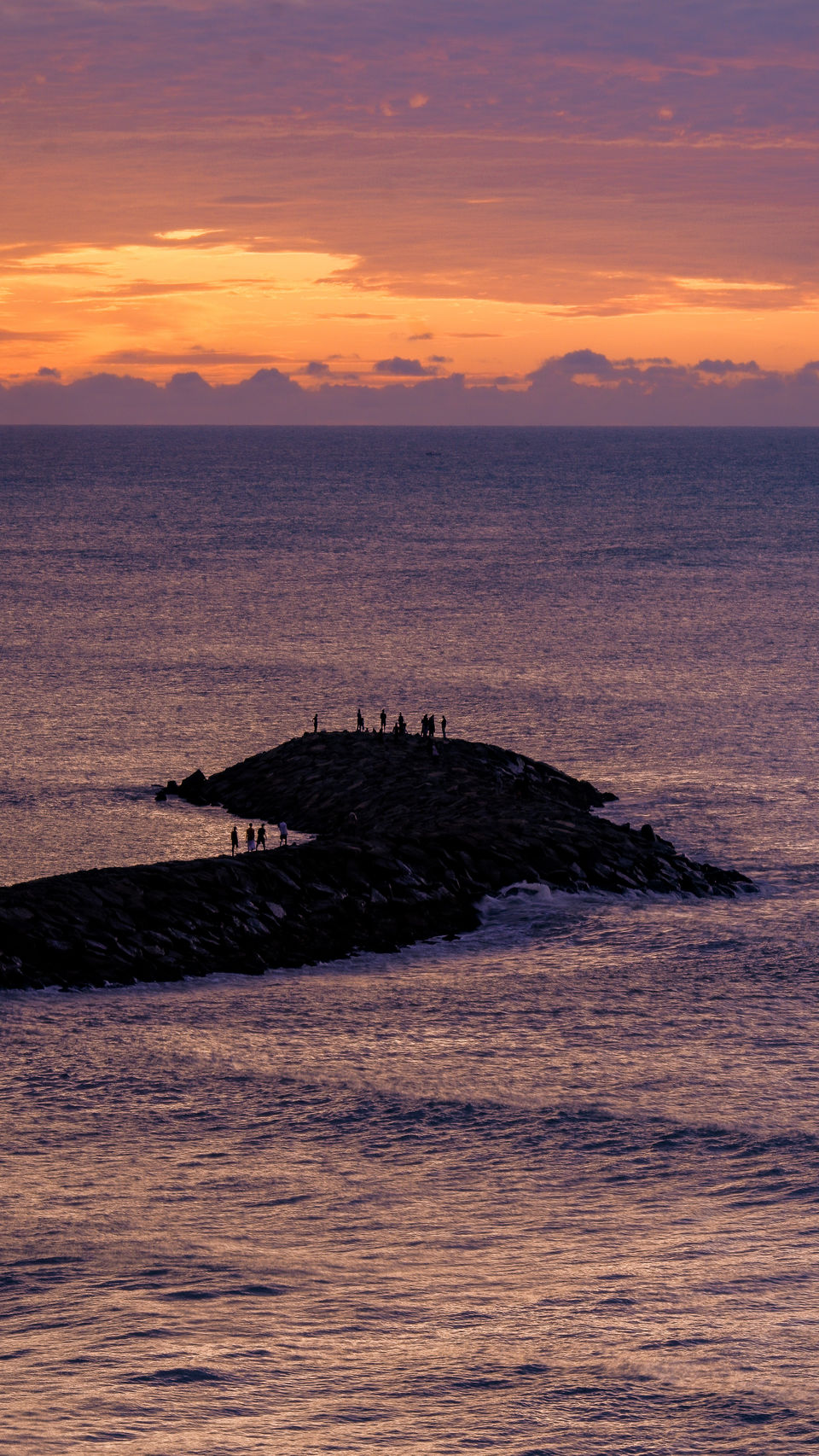
Later I headed down to Kanyakumari beach to take a couple shots with the Vivekananda Rock in the background after which I proceeded into the next phase of my journey.
KERALA
Kovalam is a small coastal town on the West Coast of India. It is part of Thiruvananthapuram district of Kerala and is an international tourist destination, mostly famous for its clean beaches, lavish resorts and soft rounded coves.
Hawa Beach is the main beach of Kovalam. A cobbled stone path runs along the beach and leads to the lighthouse. Many restaurants, cafes and shops line the path. If funky clothing and accessories interest you, this is the place to buy them.

If you are in the mood for golden fried prawns and calamari, with a bottle of beer on the side, look for an open restaurant called Coconut Grove. The food is delicious.
Kovalam is simply a place for beach hopping. If you want that Instagram worthy shot of the sun setting behind the horizon, Samudra Beach is the place to go. Tips for shooting sunsets like a pro; arrive at the location at least half an hour in advance, find the right spot for your composition, ask someone to be your subject or choose an object that you'd silhouette against the setting sun.


DAY 8: The next morning I made my way to Poovar. Local transportation like autos and tuk tuks are available. Poovar is 20km from Kovalam, right on the Tamil Nadu border. You can hire a boat to take you through the backwaters and mangrove forests of Poovar upto the Golden Beach (hidden gems alert), which is a vanishing beach and disappears under sea water during high tide. For lunch one can stop at one of the numerous floating restaurants. My choice would be the Sea Queen. Seafood catches are fresh with jumbo prawns, butter fish, salmon and crabs that weigh upto 2 kg.
A word of caution would be that the waves are very high in Golden Beach, upto 8 feet, and the current is strong. Do not stride too far into the water.
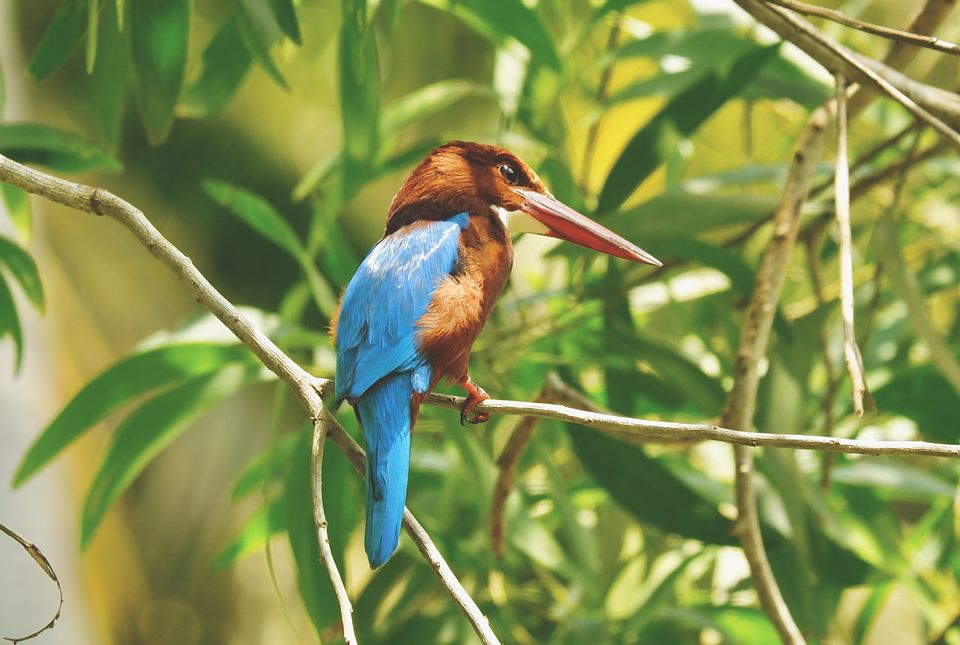
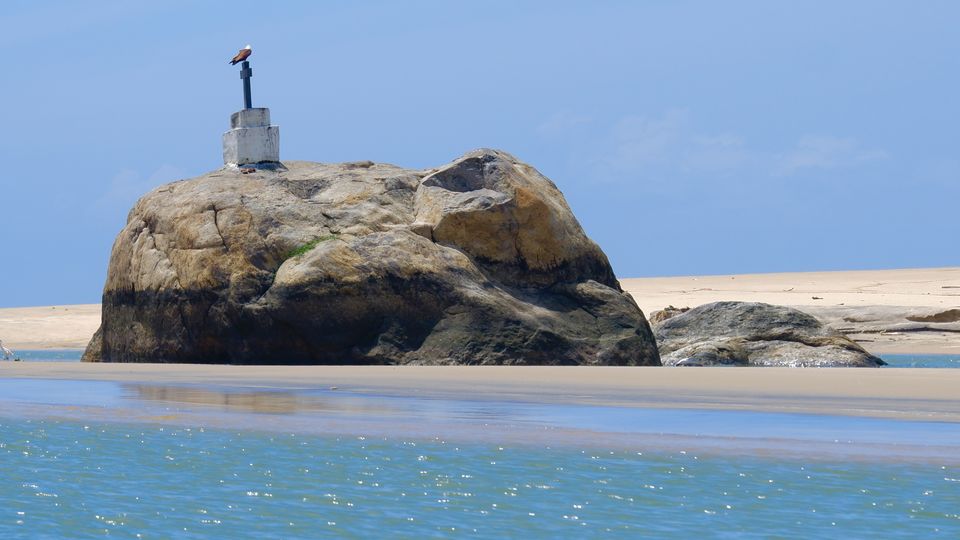
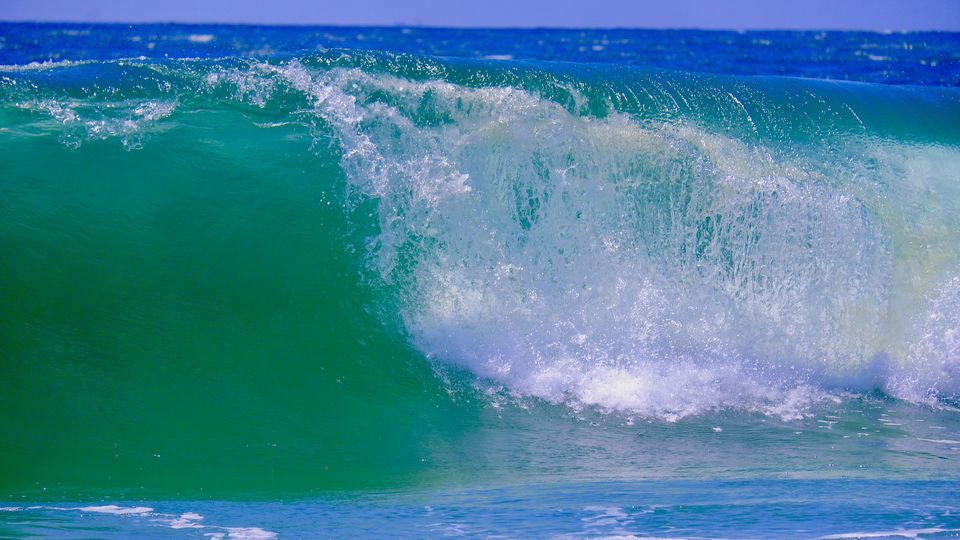

The fisherman I had photographed the day before, during sunset at Samudra beach, had suggested I visit two other places. The Shiva Statue and small cove in Aazhimala and the Vizhinjam fishing harbour (hidden gem alert) where there is a replica of Rio de Janerio's Christ the Redeemer. On the way back from Poovar I remembered his advice and first headed to Vizhinjam. The place is inhabited by a community of fishermen who are among the best fishermen in the southern coast. Vizhinjam is also the site of political unrest and has been in the limelight after a Malayali movie, 'Malik' was released, which was based on true events.
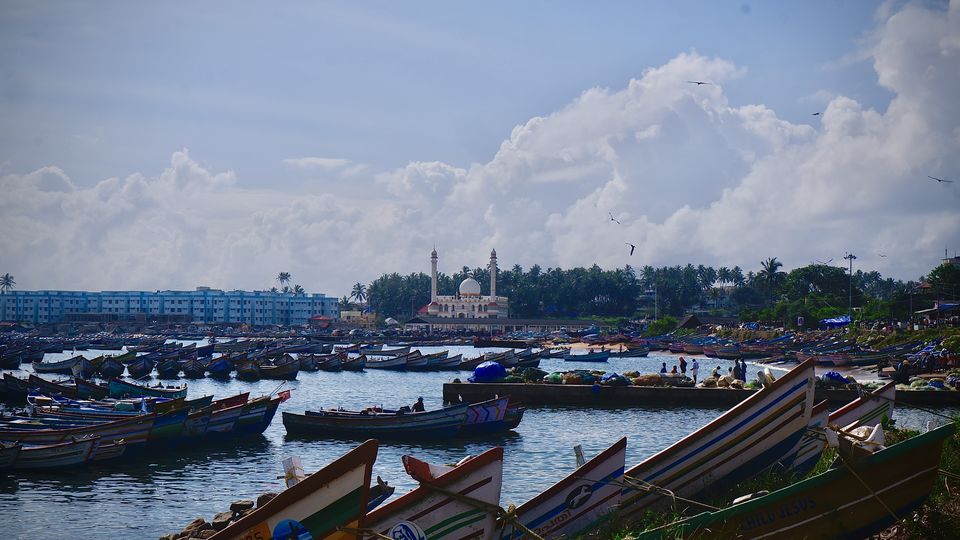
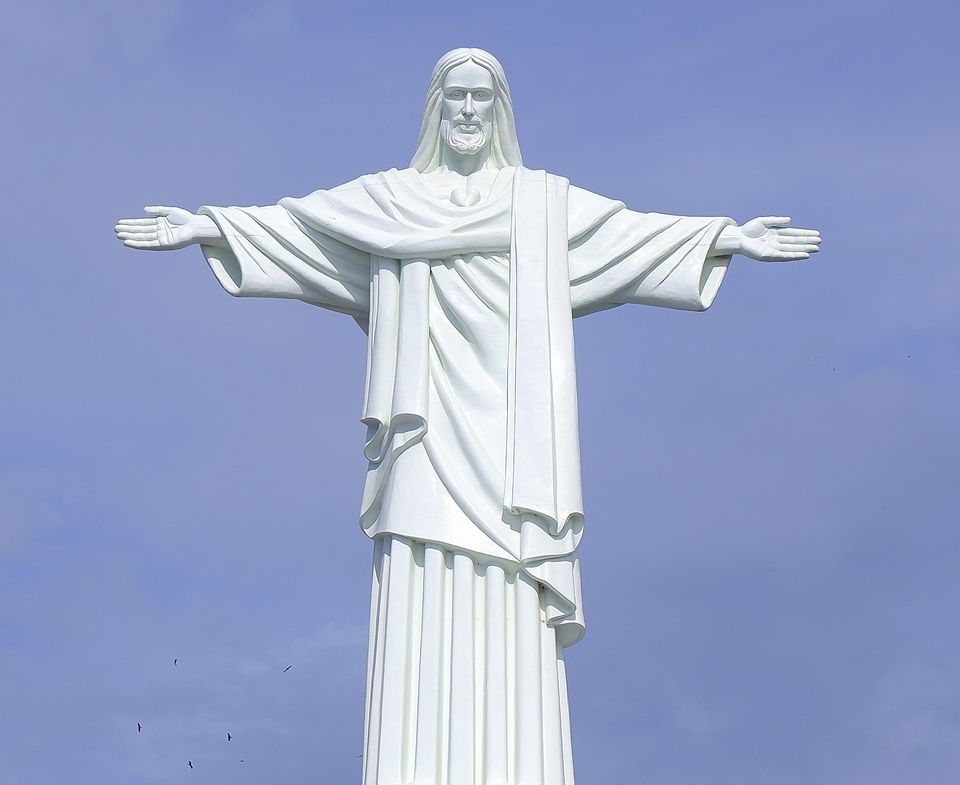
From Vizhinjam I headed to Aazhimala where a young sculptor had built a 58 ft tall Shiva statue all by himself. The statue has been built right over the coast and a triple tiered temple complex is under construction around it. Close to the temple, a sharp left leads down to a small beach which, suffice to say, is among the best beaches to stay out late for that earth shattering sunset shot.

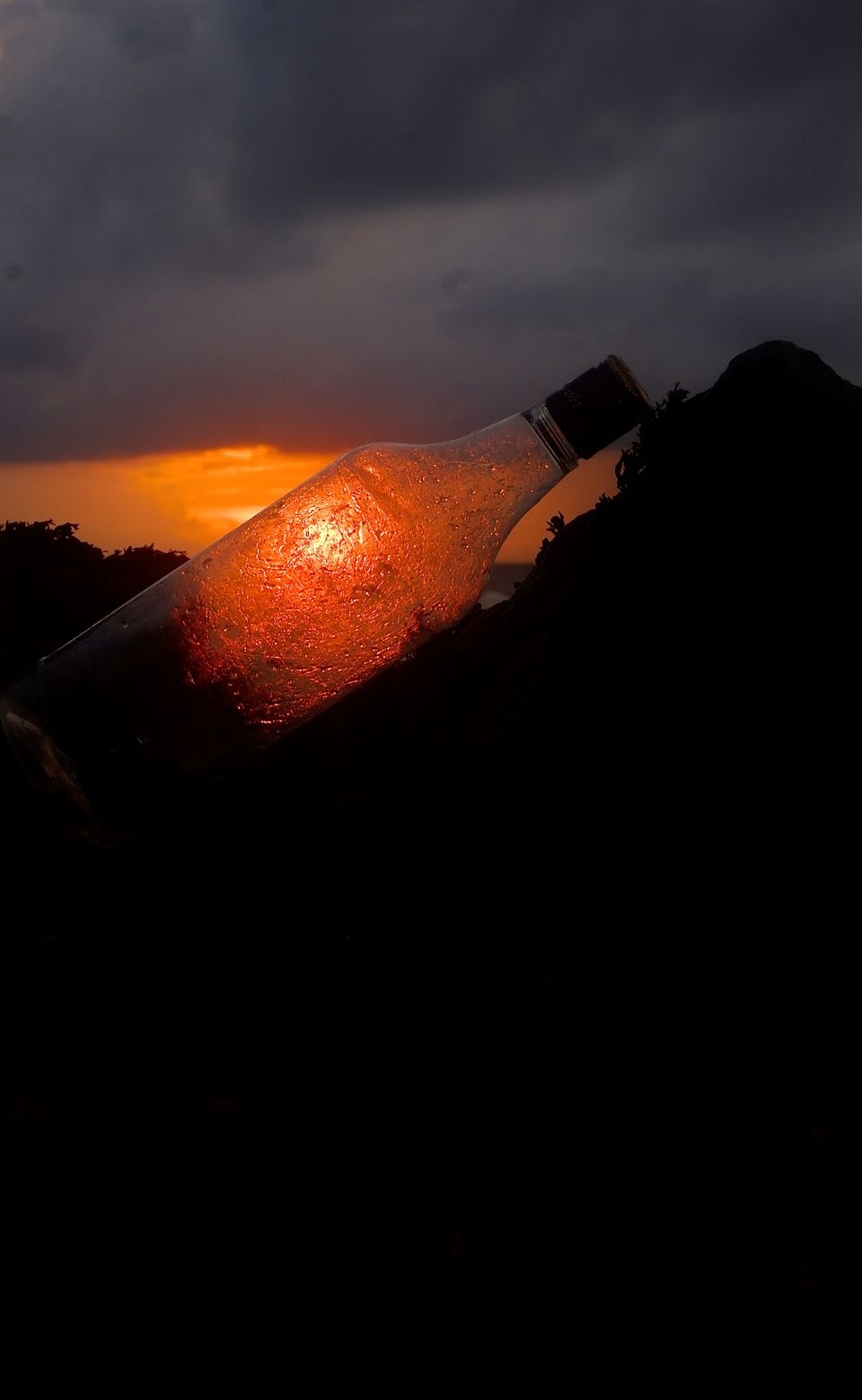
DAY 9: The next day I journeyed to Kozhikode, the famous coastal town where the explorer Vasco da Gama landed, in the year 1498, heralding trade and commercial routes to the East. It was a long journey of around 400km and due to bad road conditions and poor traffic management, it took me over 12 hours to reach Kozhikode. I decided to take the rest of the day off.
DAY 10:

The spot where Vasco da Gama landed is at least 500m inland from Kappad Beach. This is because, since 1498, the sea has receded and settlements have come up around the area.


Next I headed to a crafts' village where every family is engaged in a different form of art. At first I didn't want to visit the place because it sounded too touristy for me, but at the behest of my driver, I obliged, and boy, was I in for a treat.
The crafts' village is built around a rain water lake surrounded by rocky hills. The landscape is absolutely stunning. What's more is that the artists there are one of a kind.
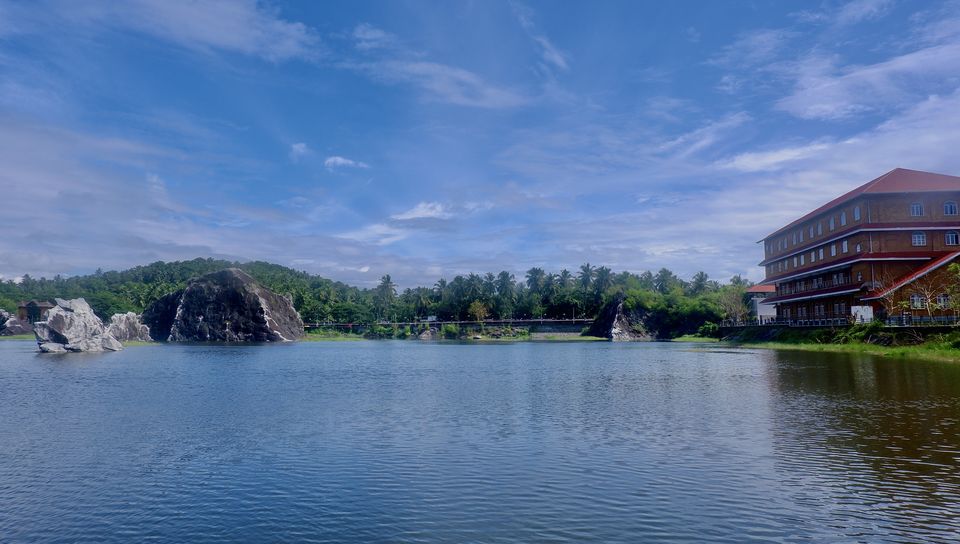
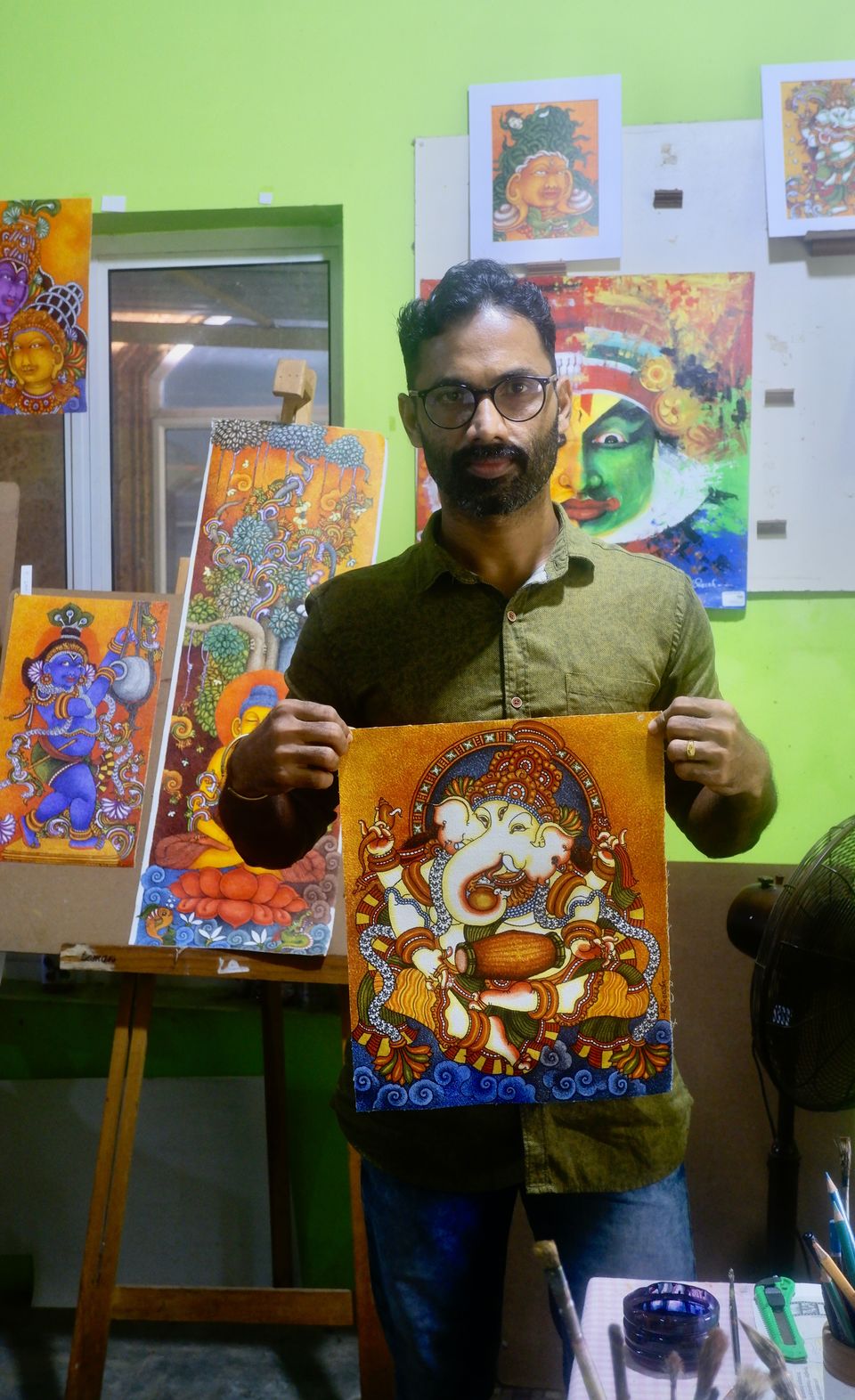
On the way back, in a small place village called Payyoli, is the humble abode of the famous Indian track athlete, P.T. Usha (hiddden gem). Stopping in front of the house and seeing the place where one of India's greatest legends, grew up and began her glorious career, is absolutely worth it.

Now Kozhikode is famous for its Biryani and its Halwa (hidden gems). Biryani is flavoured rice cooked with meat whereas Halwa is a sweet gelatinous dessert made in different flavours and colours, from fruits like pineapple, kiwis, oranges, plums and dates to coconuts and even various spices like chillies and biryani masala.
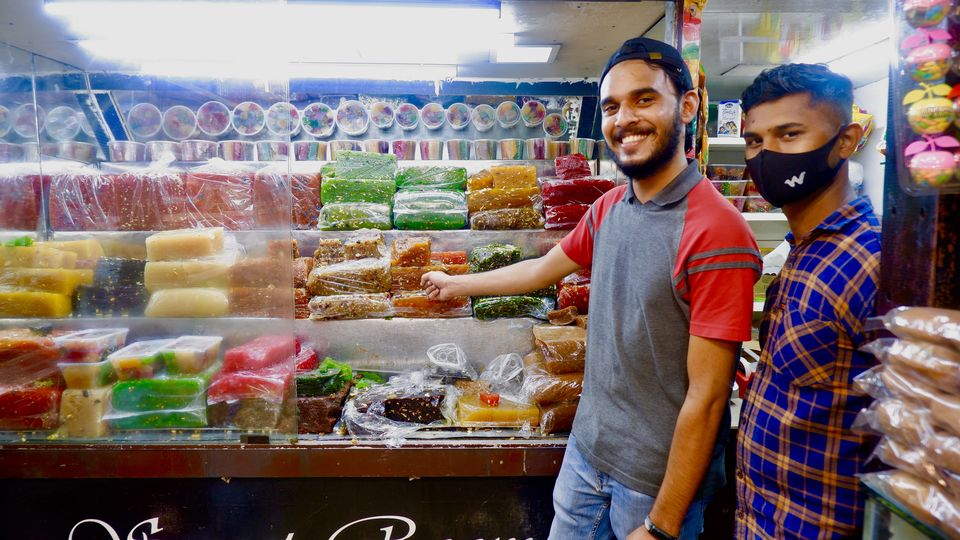
For Biryani, one can head to one of the oldest Kozhikoden restaurants, Rahmat Biryani.
Kozhikode town is a local tourist destination for Keralians who live at a distance of 20 km inland, or more from the sea. For them, Kozhikode main beach and promenade are weekend getaways, and thus cometh the crowd to Kozhikode. I had decided not to try setting foot in the crowd, due to Covid-19 regulations, but even then, I risked it, on my last evening in Kozhikode to celebrate my successful road trip in South India before I officially headed towards Goa.
Here are some of my shots of the bustling Kozhikode beach.
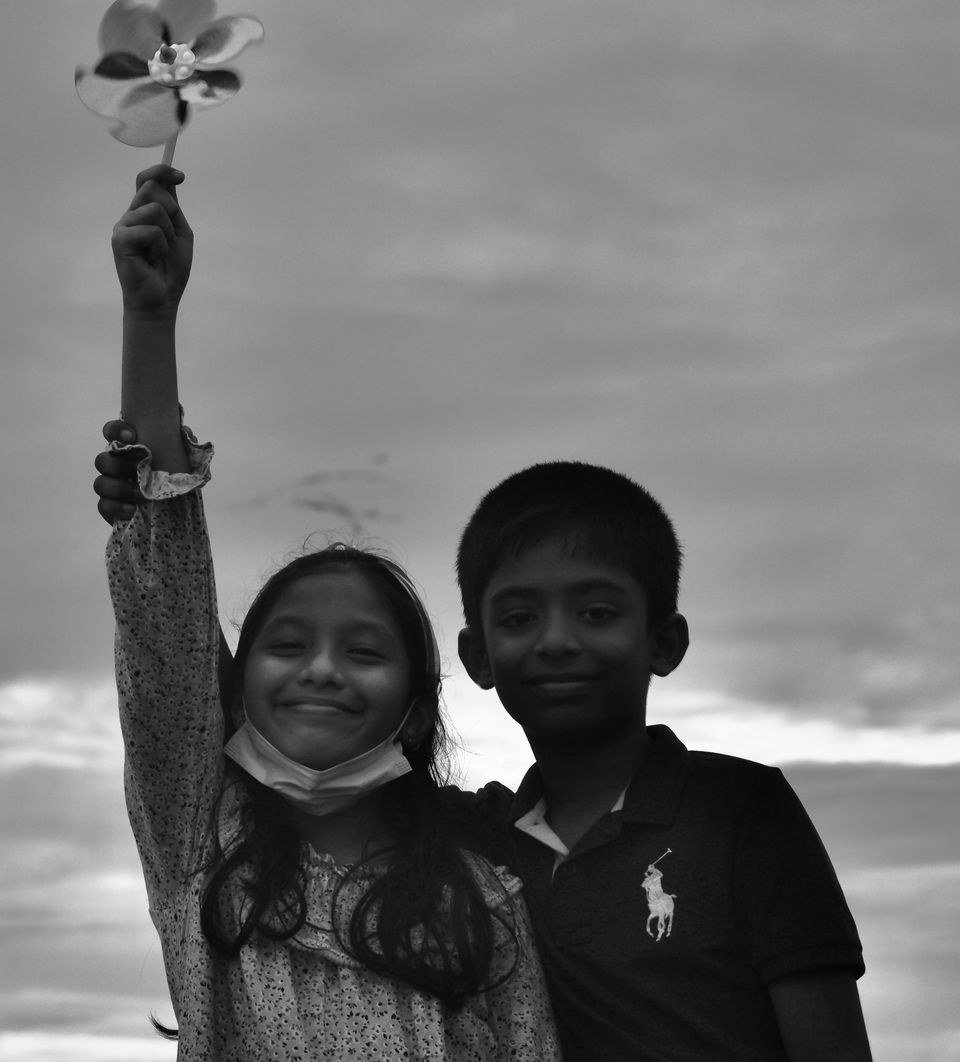
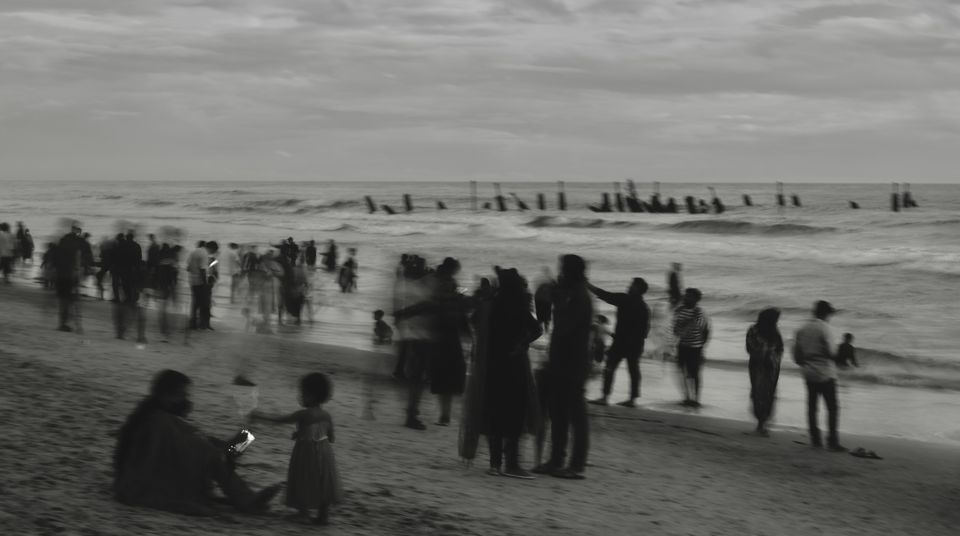
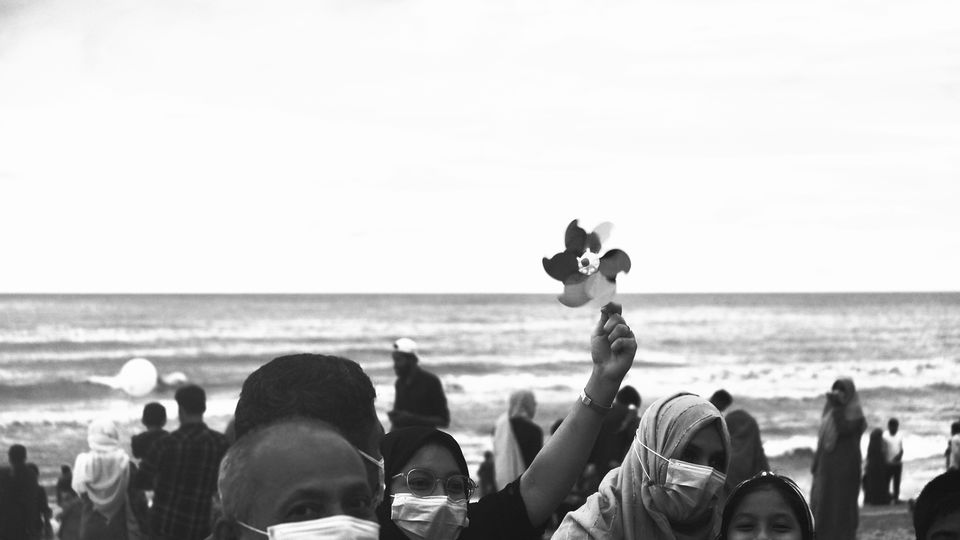

With this I ended my journey of over a 1500 km from Chennai to Kozhikode, along the coast of Tamil Nadu and Kerala. From here I'd head to Goa, with a stop in Mangalore for a night and then in Gokarna for a day. I knew I would have no time to explore Mangalore, so I decided to leave that for another time. Gokarna, on the other hand has been a dream destination of mine for a long time, especially because I am an avid trekker and climber. In Gokarna, there is a one of a kind trek, a beach trek, as one might refer to it, to cover all the beaches in Gokarna, and I wanted to do it.
The trip across South India has given me a very clear picture about southern Indian culture and governance. Although South India is often referred as one and whole, and while there are some real similarities, there are stark differences that separate the two states that quite literally form the tip of India.
While Tamil Nadu excels in road condition, Kerala suffers thoroughly due to the lack of space to build 4-lane roads, and hence the driving experience in Tamil Nadu is far better. Then again, Kerala beats Tamil Nadu in terms of landscape, for it is truly God's own country. Everywhere you look is green, every village is neat and clean and this cleanliness is another aspect where Kerala gets a 10 whereas Tamil Nadu is still a 6. My entire culinary experience in Tamil Nadu and Kerala are similar but then again if I were to rate, I'd give Kerala a 9 and Tamil Nadu a 7, solely because of their intelligent use of malabar spices.
There is one thing that I must include before I forget, the greatest similarity between the two states, one that will energise you in the morning and help you relax in the evening, Tea with Boost with no added sugar (hidden gem alert). Do not miss, you'll only get this delicious concoction in South India.
Nevertheless, this story is of my journey along the Coromandel Coast (Tamil Nadu) in the South-east and the Malabar Coast (Kerala) in the South-west, and suffice to say, I enjoyed every bit of it and have garnered new experiences that I shall cherish forever.
My journey led me next into the Konkan Coast, from Mangalore to Gokarna to Goa.
Here I shall include two bonus features for my readers, days 11 and 12.
KARNATAKA (BONUS FEATURE)
DAY 11 (A LIST OF MANGALOREAN FOOD): When I reached Mangalore the next day, it was already late evening and to reach Gokarna the next day, with time to explore the place, I would have to leave very early. With no time to explore Mangalore, I turned to my list of traditional Mangalorean food which I tasted, all in one night and shall include here.
Goli Bhajji, Korri Roti and Chicken Curry, Gassi Chicken (can be taken with korri roti), Chicken Ghee Roast and Seer Fish Fry.
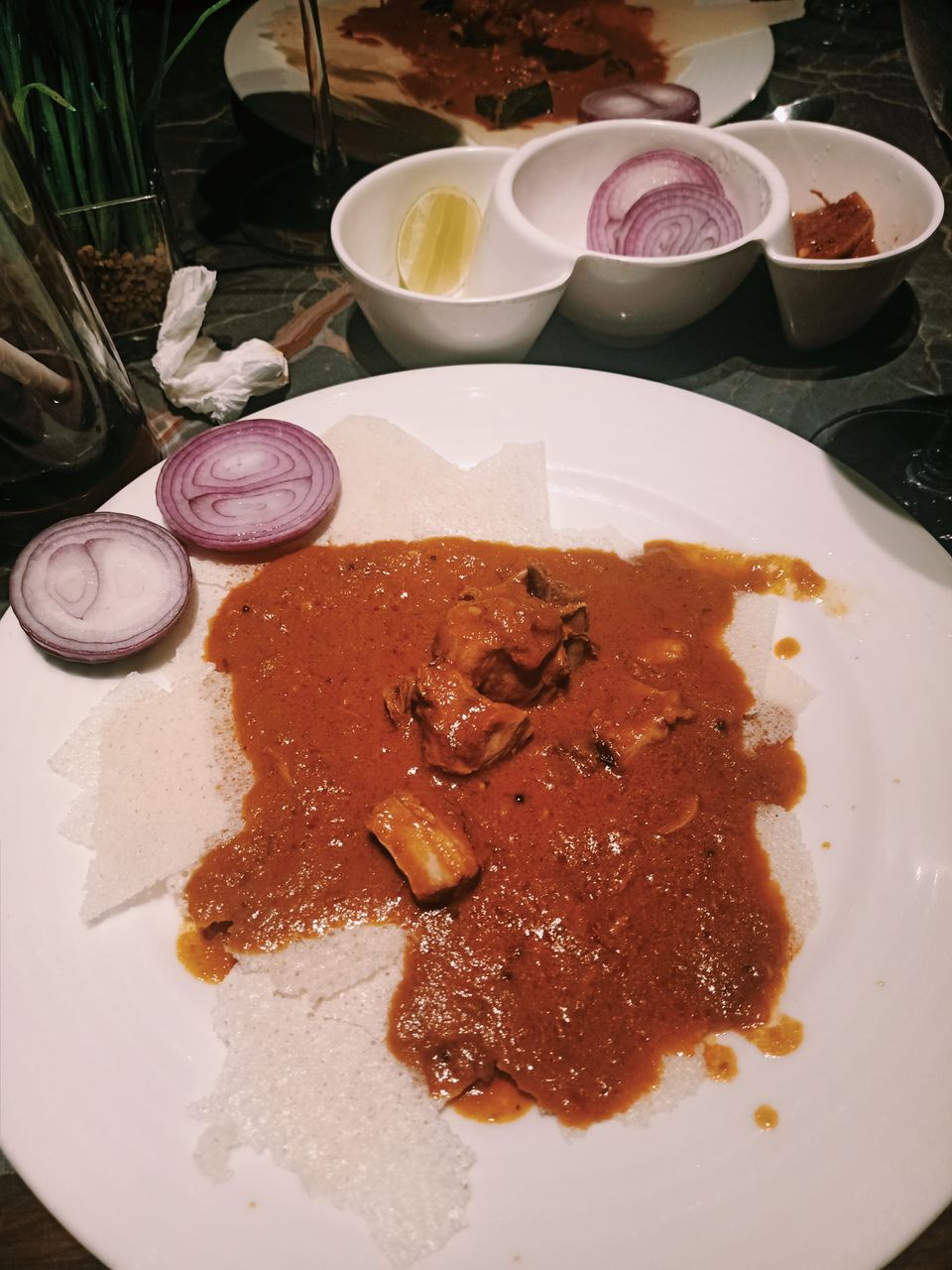
The fun part about Mangalorean food is that the spices are Malabari, the cooking style matches that of Chettinad dishes in Tamil Nadu with a hint of Mughal influence, and the taste that is produced is unique only to Mangalore and some parts of Coorg; absolutely inexplicable.
DAY 12 (GOKARNA IN A DAY): When you think about things to do in Gokarna, nothing much really comes up except spending a lazy day on the beach. If viewed from the sea, the beaches of Gokarna are arranged in the following fashion. Left to right; Main beach, Kudle Beach, Om Beach, Half Moon Beach, Paradise Beach. Now while the first three are easily accessible via motorable roads, the last two need to be reached by foot and the hike is arduous as it is dangerous, even for an experienced trekker like me. Between every beach lies a cliff or a rock face which needs to be scaled to reach the next beach. It is a constant cycle of ascent, descent and leisure.
So grab your walking shoes and head on.
Main Beach - The starting point of your journey. The cheapest hotels are around here and the beach is wide, but not clean.
Kudle Beach - After crossing main beach and climbing up Gokarna cliff, one gets the best view of Kudle beach. It is by far my favourite beach in Gokarna. Its beautiful and wide, the sand stretches for a good 100 m into the sea to create safe bathing spots. The shacks around it are always bustling, giving off a mini Goa vibe. Its amazing there. the only drawback is that it is also the most expensive part of Gokarna.
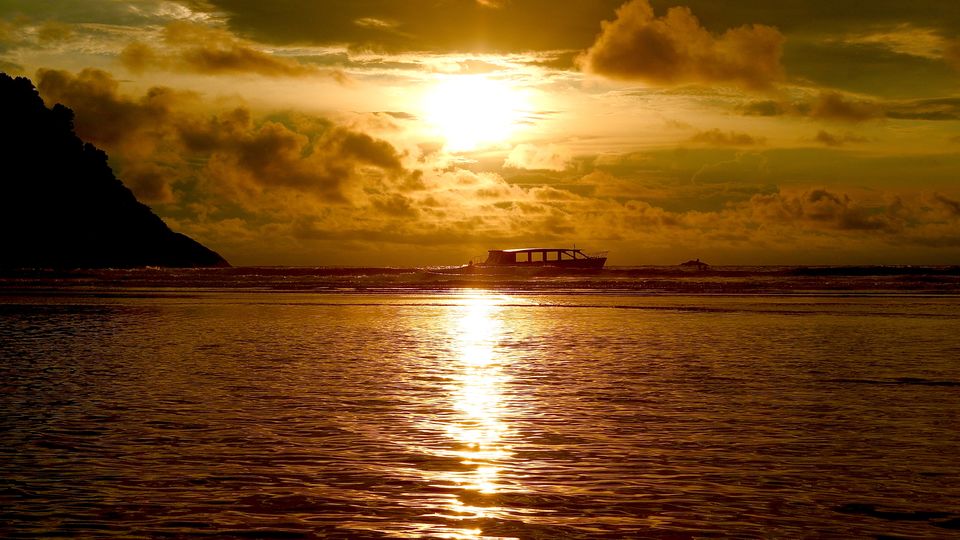
Om Beach - From Kudle one needs to climb another cliff to reach Om Beach. Watch your feet here since this area is snake infested. Om Beach is famous because when viewed aerially, the beach clearly looks as if its shaped in the form of an Om. The beach is part gravel and part sand, so its best to bathe in the sand part if you don't want to cut yourself up pretty bad. There are two restaurants here worth mentioning, Namaste and Cafe Moksha. Chill out here with local seafood snacks and a couple beers.
Half Moon Beach - From Om Beach starts your journey into the unknown. Thick forests, dense vegetation, jagged rocks, thin trails along the edge of a cliff, all are part and parcel of your journey to Half Moon Beach. It is a good 30 minute hike, but beware of two things especially. The first, do not lose your way, for if you do, you might end up falling into the sea. The second, well, don't fall into the sea, if the water doesn't take you, you'd still be smashed to bits on the sharp rocks below.
I myself have fallen twice after losing my way, and trust me, it was not a favourable experience. I consider myself very lucky to be here today, telling you guys this story.
Half Moon Beach was once surrounded by a settlement of fishermen but has long since been abandoned. Frankly, it is so secluded that being alone in the middle of nowhere somehow gives one a Robinson Crusoe vibe. Its worth the struggle actually. The beach in itself is small, but sit there alone with a beer that you've brought with yourself and just listen to the waves crash against the shore. Be at one with nature.
Just don't litter the place. Bring back the bottle back, for that matter, or any kind of waste you generate. Keep the beach clean.
Paradise Beach - About 8 minutes from Half moon Beach lies Paradise Beach, the end point of the hike. Paradise beach, albeit bigger than Half Moon beach, is more or less similar to it, the difference being, there are no settlements around it. One can. choose to relax at either Paradise, or Half Moon or both.
But again, do not litter, please keep the beach clean and maintain the sanctity of the place.
After your journey is complete, head back the same way you came, to reach Om beach. From here, auto rickshaws will take you wherever you want to go next.

For people who are devotees of Lord Shiva, the Mahabaleshwar Temple in Gokarna is host to an Atmalingam, that is, a Shiva linga that was not built by man, but appeared naturally from the ground. Be sure to visit.
With this I ended my journey and headed to Goa next morning, but that's a story for another time.
If you do undertake this trip and find my information useful, be sure to hit me up. Follow me on Instagram for more on jungle safaris, tourist destinations, backpacking tips, trekking and travel photography.
A a famous man once said, "The journey of a thousand miles begins with a single step"
So, travel more, travel safe and bon Voyage.





